Eat Like a Spaniard: The Essential Guide to Dining in Spain
Friday, December 5, 2025
Spain is a culinary paradise, but for the uninitiated, the dining culture can feel like a maze of unwritten rules. You might know your jamón from your chorizo, but do you know when to eat it, how to order it, and why the waiter hasn't brought your bill yet?

To help you transition from a "hapless tourist" to a savvy local, here is the expanded guide to Spanish food rules.
1. Reset Your Internal Clock
The biggest culture shock for travellers is the schedule. Spanish life revolves around a different rhythm.
-
Lunch (La Comida) is the main event: This happens late, typically between 2:00 PM and 4:00 PM. It is substantial, often multiple courses, and is the most important meal of the day.
-
Dinner (La Cena) is late and light: Restaurants often don't even unlock their doors before 8:30 PM, and locals won't show up until 9:30 PM or 10:00 PM.
-
The "Kitchen Gap": Be warned—kitchens often close completely between 4:30 PM and 8:00 PM. If you get hungry during this dead zone, you’re often limited to cold snacks or fast food.
2. Paella is for Lunch (And Only Lunch)
Ordering paella for dinner is the culinary equivalent of ordering breakfast cereal at a steakhouse.
-
Why? Paella is a heavy, rice-based dish originally eaten by farmworkers to fuel a hard afternoon of labor. It’s too heavy for a late Spanish dinner.
-
The Red Flag: If a restaurant serves paella at night, it is likely precooked, frozen, or aimed exclusively at tourists ("tourist trap" alert).
-
Dinner Alternatives: If you want a hot meal at night, opt for fish (merluza, bacalao), grilled meats (solomillo, secreto ibérico), or huevos rotos (fried eggs over potatoes).
3. Coffee has a Strict Timeline
In Spain, coffee is a ritual, not just a caffeine delivery system.
-
No Cappuccinos after 5 PM: Milky coffees like café con leche or cappuccinos are breakfast drinks. Ordering one after a heavy meal is seen as confusing—why fill your stomach with milk after eating?
-
The Post-Meal Coffee: After lunch or dinner, order a café solo (espresso) or a cortado (espresso with a splash of milk) to aid digestion.
-
Don't drink it before the meal: Coffee is the finale. You drink wine or water with your food, and coffee comes strictly after dessert.
4. Navigating the "Menu" vs. "La Carta"
This vocabulary distinction saves you money.
-
El Menú del Día: This is the holy grail of Spanish lunches. It is a fixed-price set menu (usually €12–€18) that includes a starter (primero), main course (segundo), drink (bebida—often wine!), bread, and dessert or coffee. It is high quality, economical, and what the locals eat.
-
La Carta: This is the standard menu with individual prices. You order from this at dinner or if you want something specific not on the set menu.
5. Tapas: Myths vs. Reality
-
There is no "Tapas Menu": In authentic places, you won't sit at a white-tablecloth table and order from a "tapas menu." Tapas are eaten at the bar or high tables.
-
Tapas vs. Raciones: A tapa is a small bite (sometimes free with a drink in regions like Granada or Madrid, but not everywhere!). If you are sitting down for a meal, you usually order raciones (larger, shareable portions).
-
Sharing is Mandatory: Spanish dining is communal. Don't order a dish just for yourself. Order 3–4 raciones for the table and put them in the middle ("para compartir").
-
Timing: Tapas hour is usually 1:00 PM–2:00 PM (pre-lunch) or 8:00 PM–9:00 PM (pre-dinner).
6. Drink Rules: Ice and Sangria
-
Sangria is for Tourists: Locals rarely drink Sangria. It is often overpriced and made with cheap wine.
-
Drink This Instead: Ask for a Tinto de Verano ("Summer Wine"). It’s red wine mixed with lemon soda (Gaseosa or Fanta Limón). It’s authentic, refreshing, and cheaper.
7. Service Etiquette: Be Assertive
Service in Spain is professional but "hands-off." Waiters will not hover asking "Is everything okay?" every ten minutes.
-
Getting Attention: It is not rude to wave your hand or make eye contact and say "Perdona" to flag a waiter down. If you don't, you might sit there forever.
-
The Bill (La Cuenta): The waiter will never bring the bill until you ask for it. To bring it early is considered rude, as if they are rushing you out. When you are ready, catch their eye and make a "signing" motion with your hand.
-
Bread & Appetisers: If a waiter puts bread, olives, or cheese on your table without you asking, it is not always free. It will appear on the bill as "Pan" or "Servicio," especially in tourist areas. If you don't want it, wave it away immediately. If you are in a village or a residential neighbourhood, it will probably be complimentary.
8. Tipping (Don't Overthink It)
The US 20% rule does not apply here. Service staff earn a living wage.
-
Cafés/Bars: Round up to the nearest euro. (e.g., if coffee is €1.80, leave €2.00).
-
Restaurants: For a sit-down meal, a tip is appreciated but optional. If the service was good, leaving 5% to 10% is generous.
-
Check the Bill: Look for "Servicio Incluido." If it's there, you definitely don't need to tip extra.
9. Food Sins to Avoid
-
Ketchup: Do not ask for ketchup for anything other than French fries (patatas fritas) or a hamburger. Putting it on a tortilla or meat is a crime.
-
Bread Dipping: Do not mix olive oil and vinegar in a bowl to dip your bread. Olive oil is drizzled on bread (often with tomato and salt), but the "balsamic sludge" dip is an Italian-American invention, not a Spanish one.
-
Butter: You will rarely get butter with bread at lunch/dinner. It's olive oil or nothing.
10. Sobremesa: The Art of Lingering
Finally, the most beautiful rule of all. When the meal is finished, do not rush.
-
Sobremesa is the time spent chatting at the table after the food is gone. It can last 30 minutes to an hour.
-
The waiter will not push you out. Order a chupito (herbal liqueur), relax, and enjoy the conversation. This is the heart of Spanish living.
 3
Like
Published at 5:39 PM Comments (0)
3
Like
Published at 5:39 PM Comments (0)
Are You at Risk of a €50,000 Fine for Employing Domestic Staff in Spain?
Friday, November 14, 2025
For many expatriates, second-home owners, and retirees in Spain, employing local domestic help—a cleaner, a nanny, or someone to assist with elderly care—is a common part of life. However, a significant legal change has quietly introduced a serious compliance risk that could result in fines of up to nearly €50,000 for households that haven't taken the necessary steps.

The grace period for a key new regulation has ended, and Spanish Labour Inspectors are now legally empowered to issue severe penalties to employers who fail to comply.
The New Law: Workplace Risk Assessment is Now Compulsory
The law stems from a Royal Decree introduced over a year ago, which aims to improve health and safety protection for domestic service workers. The core requirement is straightforward: Every household in Spain that employs a domestic worker, regardless of the number of hours, must have a formal Workplace Accident Prevention Plan in place.
This is not a suggestion; it is a mandatory obligation designed to assess and mitigate risks in the home environment.
The Penalty for Non-Compliance
The deadline for implementation was November 14, 2025. Since this date, failure to present the required documentation if requested by the Labour Inspectorate can lead to substantial fines:
-
Minimum Fines: Starting from €2,451 up to €9,830.
-
Aggravated Fines (Serious Infractions): These can escalate rapidly, ranging from €24,000 up to a maximum of €49,000.
This marks a significant shift, moving the responsibility for occupational risk prevention squarely onto the employer, even within a private home.
How to Comply: The Free Online Solution
Recognising that this is a complex and novel requirement for individual households, the National Institute for Safety and Health at Work (INSST) created a free, straightforward online platform to simplify the process.
You must use this platform to generate your formal document:
1. Access the Platform
The official, free web platform provided by the Spanish government is: www.prevencion10.es
2. Complete the Assessment
The process involves filling out a digital questionnaire. You will need to enter your details (as the employer) and the employee's details. The tool then asks about the features of your home and the specific tasks the worker performs:
-
Home Features: Does the home have stairs? Are there pets? What is the condition of the electrical installation?
-
Worker Tasks: Is the worker cleaning, ironing, cooking, or caring for dependent people?
3. Download and Sign the Plan
The tool uses your answers to identify potential risks and suggests improvement measures. Crucially, it then generates the required document, officially titled the 'Plan de prevención de riesgos laborales' (Occupational Risk Prevention Plan).
This document must be signed by both you (the employer) and the employee.
4. Keep it Safe
Once signed, this document must be readily available at your property in case the Labour Inspectorate requests it during an inspection.
What Does This Mean for the Expat Community?
For those in the "Eye on Spain" community who rely on regular domestic help, this new requirement is an essential administrative task that can no longer be ignored.
While the new law is primarily focused on safeguarding workers, the responsibility for compliance—and the enormous financial risk of non-compliance—lies entirely with the employer.
If you employ anyone officially registered under the domestic workers regime, you should immediately use the www.prevencion10.es tool to generate and sign the required Prevention Plan. Taking this simple step now could save you tens of thousands of euros in potential fines down the line.
 2
Like
Published at 10:15 PM Comments (1)
2
Like
Published at 10:15 PM Comments (1)
Why is the Second-Hand Car Market in Spain So Expensive?
Friday, October 17, 2025
As an expat in Spain, you've probably noticed it: the price tag on used cars seems surprisingly high, often more so than in your home country or other major European markets like Germany. You're not imagining things. The Spanish second-hand car market operates under a unique set of circumstances that drives prices up.
Here is a breakdown of the key factors causing those elevated prices:

1. High Demand Meets Low Supply of Young Cars
The primary reason for high prices is a classic supply and demand imbalance, specifically for desirable, newer used vehicles.
-
Longer Car Ownership Culture: Spaniards traditionally hold onto their cars for a very long time. Unlike in countries with a strong "change every three years" culture, it’s common for cars to be kept until they are 10, 15, or even 20 years old. This means the supply of well-maintained, low-mileage vehicles between 3 and 7 years old is severely restricted, pushing the prices of these few models sky-high.
-
Less Leasing (Renting) Culture: In many European countries, corporate and private leasing is a major source of young, well-serviced used cars. In Spain, this leasing culture is less prevalent, which further limits the consistent, high-quality supply that enters the secondary market.
-
High Cost of New Cars: New cars are expensive in Spain, which pushes a large segment of the population, including young families and budget-conscious buyers, to exclusively target the used car market. This massive demand from local buyers keeps prices competitive and prevents them from dropping.
2. High Transaction Costs and Taxes
The financial transaction of buying a used car comes with significant additional costs that contribute to the final price.
-
Transfer Tax (Impuesto de Transmisiones Patrimoniales): When you buy a used car from a private individual (the most common source), you have to pay a regional transfer tax. This tax is typically 4% to 8% of the car's official value and can be a substantial hidden cost compared to buying a used car in some other countries.
-
Retention of Value: Because of the tight supply, cars in Spain tend to depreciate slower than in other large markets. This higher residual value means sellers (and dealers) can demand a better price for older vehicles.
3. Importing is Not a Cheap Alternative
You might consider importing a cheaper car from another EU country, such as Germany, but this rarely offers the significant savings you might hope for.
-
Bureaucracy and Fees: Importing a car to Spain involves a complex process called matriculación (re-registration). This includes fees for technical inspections (ITV), homologation, administrative processes, and, crucially, a Registration Tax (IEDMT) based on the vehicle's CO2 emissions. These fees can easily add several thousand euros to the final price, wiping out any initial savings.
4. Market Quality and Dealer Pricing
While you pay a high price, the quality of the average Spanish used car is often disappointing, which can be frustrating for expats.
-
Older Fleet: A large percentage of the used vehicles for sale are over 10 years old and have high mileage.
-
Dealer Markups: Used car dealers often purchase older, cheaper vehicles, polish them up, and then apply substantial markups to capture the high demand, making the price-to-quality ratio unfavourable.
In short, the Spanish used car market is a seller's market, characterised by low supply of young vehicles and high structural demand, making it an expensive place to acquire a second-hand car.
 1
Like
Published at 9:05 PM Comments (0)
1
Like
Published at 9:05 PM Comments (0)
Escape the Crowds: Discovering Spain's Untouched Regions
Saturday, October 11, 2025
Spain remains one of the world's most beloved travel destinations, a vibrant tapestry of history, sun-drenched beaches, and world-class cuisine. Yet, the sheer volume of visitors has led to over-tourism in hotspots like Barcelona, Seville, and the Balearic party islands. For travellers seeking authentic charm, natural beauty, and a peaceful escape, the secret lies in turning away from the well-trodden paths toward Spain's magnificent, less-visited regions.
Here are some of the country’s best-kept secrets, offering a true taste of Spanish life far from the tourist throngs.

The Wild Green North: From Coast to Wine Country
While the southern coast basks in relentless sun, Northern Spain offers a dramatically different, lush, and rugged landscape, often feeling more like Ireland or Cornwall than the Mediterranean.
-
La Rioja: Often cited as Spain’s least-visited region, La Rioja is an absolute must for wine lovers. Beyond its over 500 internationally renowned wineries, the region boasts stunning medieval villages, pilgrimage churches, and the quiet beauty of the Sierra de Cebollera Nature Reserve.
-
Asturias: Nestled between Galicia and the Basque Country, Asturias is a haven of green mountains, spectacular coastline, and picturesque fishing villages like Cudillero and Luarca. Its unpredictable weather keeps mass tourism at bay, ensuring tranquillity and a truly authentic northern Spanish experience. Don't miss the dramatic cliffs and quiet beaches that resemble the rugged English coast.
-
Galicia: Known for its Celtic roots, foggy forests, and spiritual heritage, Galicia is home to the stunning Rías Altas—a craggy coastline dotted with quiet seaside towns. A highlight is the Cíes Islands, an archipelago off the coast, often called the "islands of the gods," which feature pristine, Caribbean-like beaches with protected status and limited daily access.
-
Cantabria: Explore the hidden gem of the Costa Trasmiera, a surprisingly rural coastline with superb beaches like Playa de Ris. The quaint mountain village of Carmona offers a look at traditional northern mountain life.
Inland and Southern Tranquillity
Beyond the coastal rush, Spain’s interior offers historic cities and bucolic mountain escapes that have largely flown under the radar.
-
Aragón (The Matarraña): This vast region remains stubbornly off the mainstream tourism map. One of its most beautiful corners is The Matarraña in the province of Teruel. Dubbed the "Spanish Tuscany," this area features rolling hills covered in olive and almond groves, peppered with gorgeous, honey-colored medieval villages like Valderrobres, perfect for slow travel and quiet contemplation.
-
Extremadura (Valle del Ambroz): Located in western Spain, the Valle del Ambroz is a bucolic, sparsely populated area. It’s ideal for nature lovers, offering an abundance of beech and birch forests, terraced hillsides of cherry and plum orchards, and numerous wild swimming spots.
-
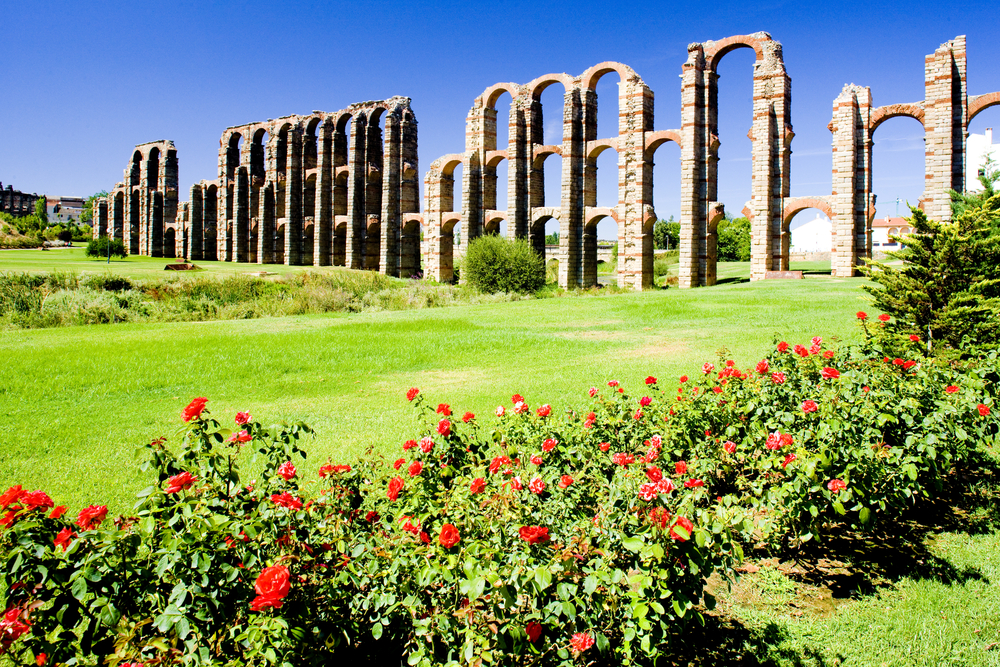
-
Cádiz, Andalusia: While Andalusia has major hotspots, the port city of Cádiz offers an escape. As one of Europe's oldest continuously inhabited cities, it rivals the historic charm of Seville but with a more laid-back, coastal vibe. South of Cádiz, the town of Tarifa is a surf-loving haven on the southernmost tip of mainland Europe, offering stunning views of Morocco and access to wild, protected beaches.
Island Getaways Without the Crowds
While Mallorca and Ibiza are globally famous, not all of Spain's islands are overwhelmed.
-
Quieter Balearics: While northern Ibiza is known for its pine woods and secluded coves, the island of Menorca is a UNESCO Biosphere Reserve and offers a significantly quieter alternative, ideal for peaceful breaks and nature-focused activities.
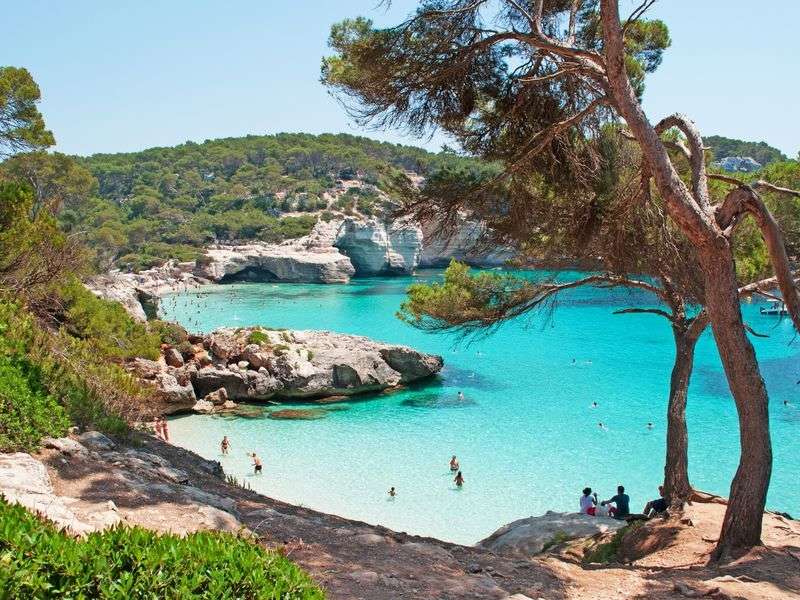
-
Lesser-Known Canaries: Head to the smaller, westernmost Canary Islands to truly avoid the masses. La Gomera and El Hierro are less-visited and offer a sanctuary for reflective tourists. La Gomera is known for its lush, laurel forests in the Garajonay National Park, perfect for hiking, while El Hierro is the smallest island and is a UNESCO Biosphere Reserve, popular for its clear waters and diving opportunities.
By choosing these destinations, you not only enjoy a more serene and culturally rich holiday but also contribute to a more sustainable distribution of tourism across Spain. It's time to discover the true, unspoiled heart of the country.
 4
Like
Published at 11:33 AM Comments (0)
4
Like
Published at 11:33 AM Comments (0)
Camino de Santiago : Santiago de Compostela Battles Overtourism Crisis
Friday, September 26, 2025
Santiago de Compostela, the historic Galician capital and the spiritual culmination point of the Camino de Santiago pilgrimage, is increasingly joining the ranks of European cities struggling with the negative consequences of overtourism. For centuries, residents lived in harmony with the influx of pilgrims, but a dramatic surge in visitor numbers has reached a critical tipping point, leading to a palpable sense of alienation among longtime locals.
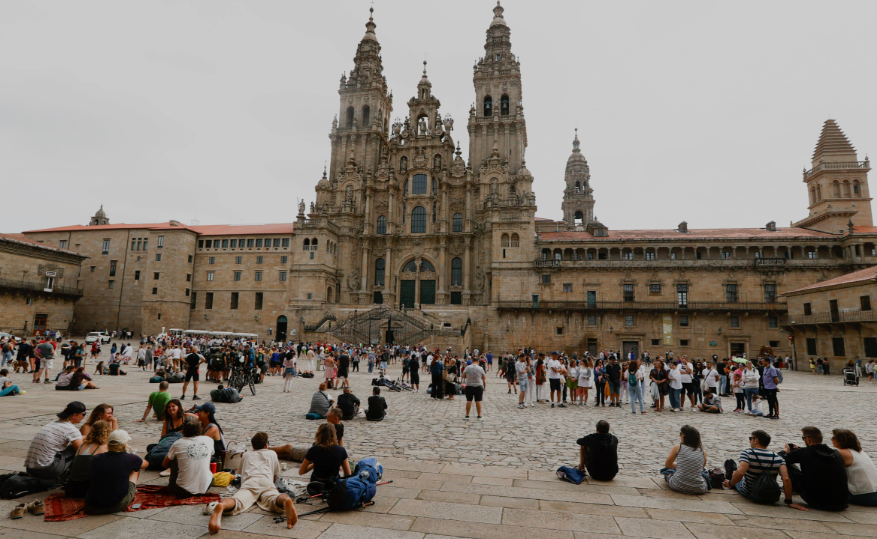
The statistics behind the crisis are staggering. Last year, a record half-million people officially completed one of the Camino routes, a number equivalent to five times the city's permanent resident population. This surge, turbocharged by social media and post-pandemic travel trends, has turned the UNESCO World Heritage-listed old town into a space almost exclusively dominated by outsiders.
The once-vibrant historic centre, which served as the hub of communal life for a millennium, is undergoing a profound transformation. As residents are priced out and essential services disappear, the old town is losing its soul. Roberto Almuíña, president of a local neighbourhood association, laments the loss of community infrastructure: "The city has emptied out... all we've got are closed, abandoned buildings that are falling apart."
The most immediate and painful effect of overtourism on residents is the spiralling housing crisis. The proliferation of short-term vacation rentals has decimated the long-term rental market, driving up prices and making it nearly impossible for ordinary citizens to live in the city centre.
According to a study commissioned by the city council, annual rent prices in Santiago de Compostela surged by 44% between 2018 and 2023. For young workers and families, finding an affordable apartment is now described as "mission impossible." The only people who manage to stay in the historic centre are those fortunate enough to inherit property. This trend is not unique to Santiago, mirroring nationwide street protests across Spain against unaffordable housing linked to the tourist boom.
The relentless pressure from tourism has stripped the old town of its fundamental purpose as a residential area. Permanent residents, reduced to an estimated 3,000, feel like they are "resisting like the Gauls" behind the thick stone walls of their buildings.
The community services that underpin daily life are disappearing: there are now virtually no hardware stores, newsstands, or functional bakeries left. These businesses have been replaced by a homogeneous landscape of cafes, souvenir shops, and ice cream parlours catering solely to the transient visitor.
Residents are not suffering from "tourism-phobia," as they emphasise they have always welcomed visitors. Their rejection only arises, as Almuíña states, "when the pressure goes beyond what is reasonable." As the number of pilgrims continues to break records this year, Santiago de Compostela faces the urgent challenge of balancing its role as a spiritual and cultural destination with the fundamental need to preserve its resident community.
 1
Like
Published at 10:05 PM Comments (0)
1
Like
Published at 10:05 PM Comments (0)
Ryanair Axes Spanish Flights, Citing Rising Airport Fees
Friday, September 12, 2025
Ryanair has announced a significant reduction in its Spanish operations, a move that will see the airline close one of its bases and terminate dozens of routes. The decision, which will impact millions of travellers, is in response to a planned increase in airport fees by Spain's state-controlled operator, Aena.

The airline is set to close its base in Santiago de Compostela, which will result in the suspension of all flights to Vigo and Tenerife North. This move is part of a broader strategy to cut capacity in regional Spain by 16% and in the Canary Islands by 10%. In addition to the base closure, Ryanair will keep its bases in Valladolid and Jerez shut and reduce capacity at airports in Asturias, Santander, Zaragoza, and Vitoria.
The cuts are expected to eliminate around two million seats per year from the Spanish market, with the airline redirecting this capacity to routes in Italy, Morocco, Croatia, and Albania. Services to Tenerife North are set to end with the start of the winter season, while flights to Vigo will be suspended in January 2026.
Ryanair CEO Eddie Wilson and Head of Communications Alejandra Ruiz announced the changes at a press conference in Madrid, cautioning that the cuts would lead to "a loss of investment, connectivity, tourism, and employment in regional Spain." The airline is urging the Spanish government and competition watchdog CNMC to intervene against the "excessive rate increases" proposed by Aena, which plans to raise fees by 6.5% by 2026.
This recent announcement comes after a summer of travel disruptions, with the airline also being affected by air traffic control strikes and ongoing baggage handler strikes in Spain.
 3
Like
Published at 10:55 PM Comments (1)
3
Like
Published at 10:55 PM Comments (1)
The Canary Islands or the Balearic Islands?
Saturday, May 31, 2025
Choosing the perfect island paradise for your move is a delightful dilemma, especially when considering the sun-drenched Spanish archipelagos of the Balearics and the Canaries. Both offer an alluring escape, but their distinct characteristics cater to different lifestyles and preferences. This comprehensive guide will help you navigate their unique charms, comparing everything from their geographical makeup and climate to property prices and culinary delights, ultimately assisting you in deciding which island group is better suited to your needs.
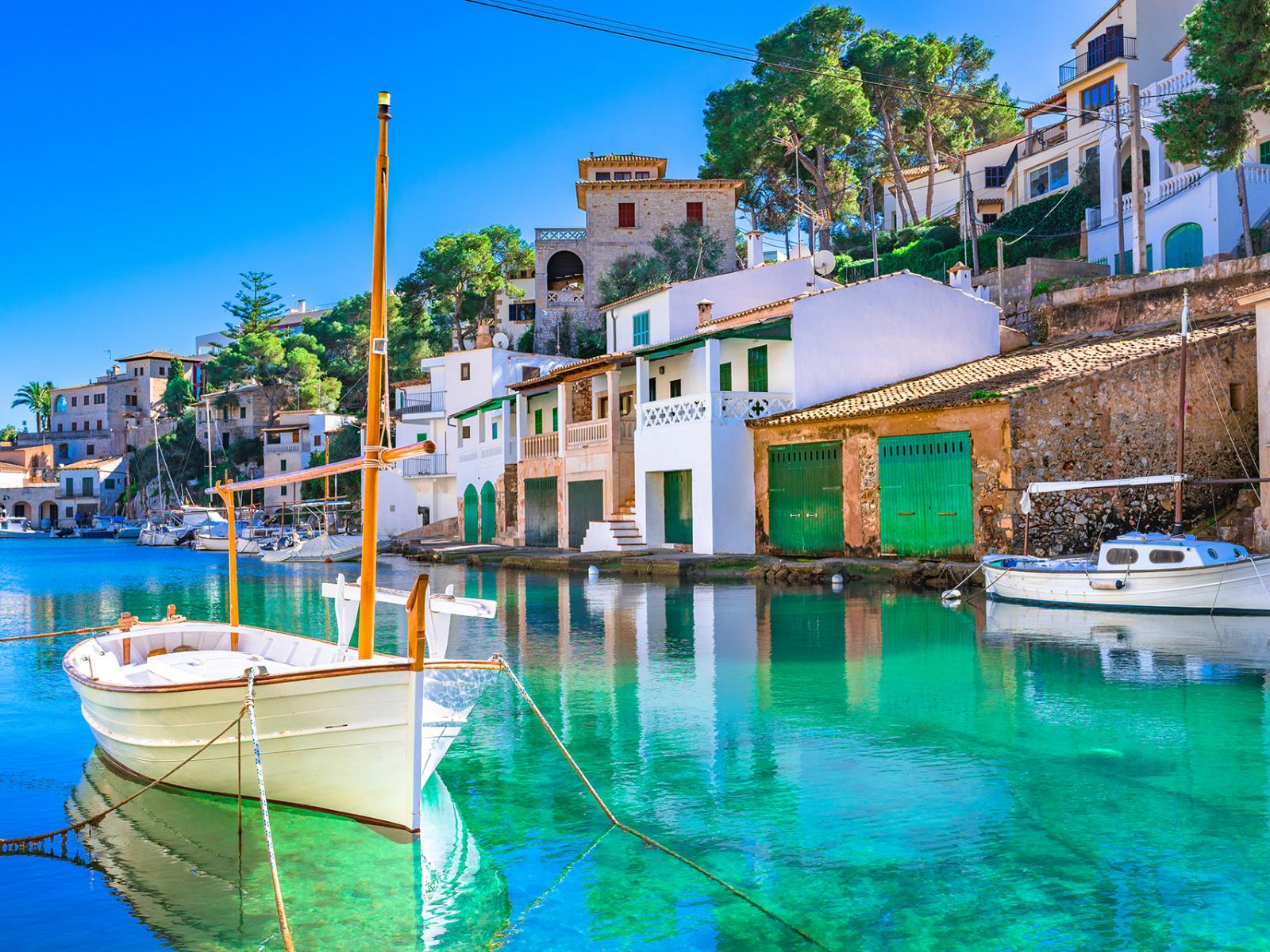
The Archipelagos Unveiled: A Geographical Overview
To understand the differences, it's crucial to first grasp the composition and location of these captivating islands.
The Balearic Islands: Located in the western Mediterranean Sea, off the eastern coast of mainland Spain, the Balearics are geographically closer to Europe and form an autonomous community of Spain. The archipelago consists of several islands, but the main ones are:
- Mallorca: The largest island, known for its stunning mountain ranges, picturesque coves, vibrant capital Palma, and diverse landscapes ranging from bustling resorts to tranquil rural areas.
- Menorca:A more laid-back and unspoiled island, famous for its pristine beaches, natural harbours, and a slower pace of life. It's a UNESCO Biosphere Reserve, emphasising its commitment to environmental preservation.
- Ibiza: Globally renowned for its electrifying nightlife, but also offers beautiful beaches, charming old towns, and surprisingly tranquil areas once you venture away from the main party hubs.
- Formentera: The smallest inhabited island, accessible only by ferry from Ibiza, it's a true gem with Caribbean-like turquoise waters and an incredibly relaxed atmosphere, perfect for a quiet escape.
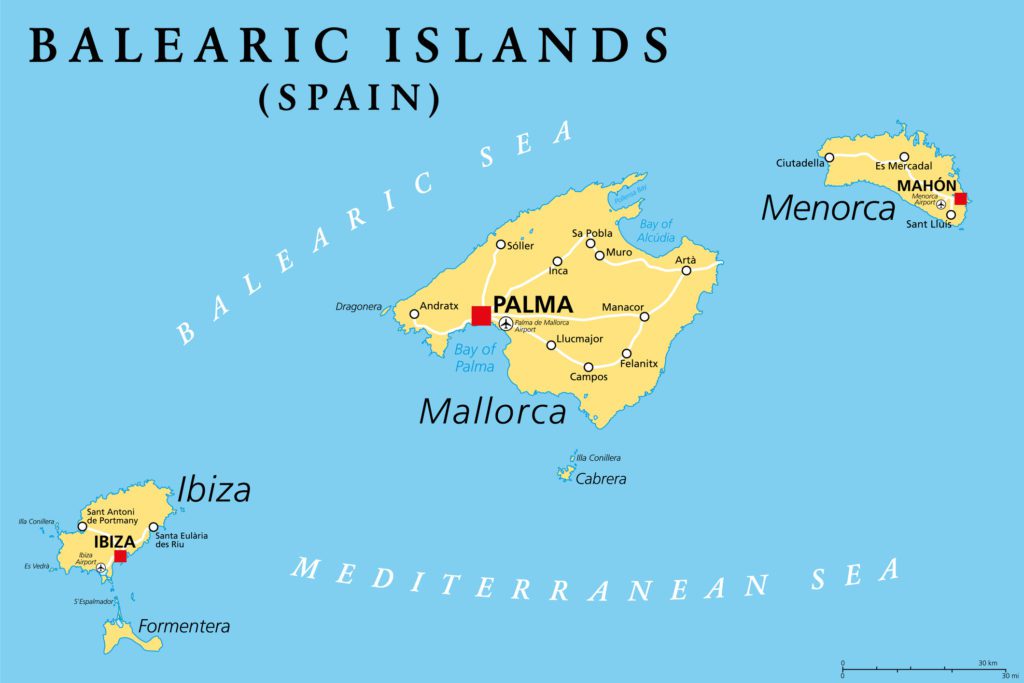
The Canary Islands: Situated in the Atlantic Ocean, off the northwest coast of Africa, the Canaries are geographically closer to Africa but politically and culturally European, also forming an autonomous community of Spain. This distance from the European mainland contributes significantly to their unique climate and natural environment. The main islands are:
- Tenerife: The largest and most populous island, dominated by Mount Teide, Spain's highest peak. It offers a diverse range of landscapes, from volcanic terrain and lush forests to bustling tourist resorts and historic towns.
- Gran Canaria: Often described as a "miniature continent" due to its varied microclimates and landscapes, ranging from the famous Maspalomas dunes in the south to the green, rugged north and the vibrant capital, Las Palmas.
- Lanzarote: Distinctive for its volcanic landscapes, particularly Timanfaya National Park. Its architecture, heavily influenced by artist César Manrique, blends seamlessly with the natural environment. It's known for its unique vineyards and black sand beaches.
- Fuerteventura: Renowned for its exceptionally long, white sandy beaches and consistent strong winds, making it a mecca for windsurfing and kitesurfing enthusiasts. It's the second-largest island and relatively sparsely populated.
- La Palma: Known as "La Isla Bonita" (The Beautiful Island) due to its lush green forests, dramatic volcanic craters, and stunning stargazing opportunities thanks to its clear skies and astronomical observatory.
- La Gomera: A circular island with deep ravines and dense laurel forests, famous for Garajonay National Park and its ancient whistling language, Silbo Gomero. It's a hiker's paradise.
- El Hierro: The smallest of the main islands, El Hierro is a UNESCO Biosphere Reserve and Geopark, celebrated for its sustainable tourism, dramatic cliffs, and rich marine life, making it a diver's dream.
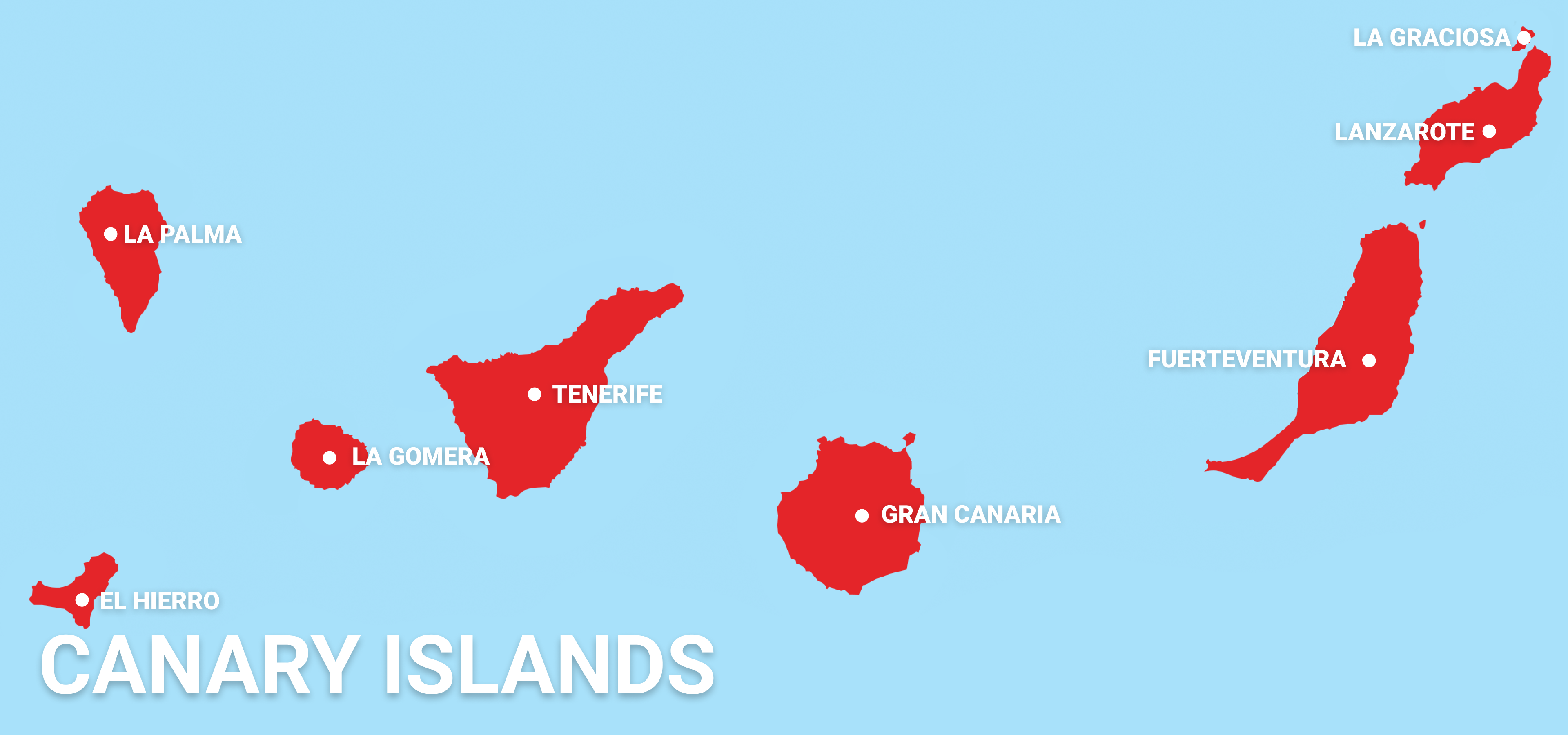
How They Are Different: The most striking difference lies in their geological formation and resulting landscapes. The Balearics are extensions of the Iberian Peninsula's mountain ranges, primarily limestone, leading to rolling hills, fertile plains, and dramatic cliff faces. The Canaries, on the other hand, are volcanic in origin, resulting in more rugged, often dramatic, and diverse terrain with black, red, and golden sands. Their geographical separation also plays a crucial role in their climates and ecosystems, as we'll explore.
Beaches: Sandy Shores and Volcanic Vistas
Both archipelagos boast incredible beaches, but their characteristics vary significantly, reflecting their geological differences.
Balearic Islands Beaches: Generally, the Balearics are famous for their white or golden sandy beaches and crystal-clear turquoise waters, reminiscent of classic Mediterranean postcards.
- Mallorca: Offers an incredibly diverse range, from long stretches of family-friendly golden sand (e.g., Alcúdia, Playa de Palma) to secluded, picturesque coves (calas) nestled between pine forests and rocky cliffs (e.g., Cala Mondragó, Sa Calobra). The water is typically calm and perfect for swimming and snorkelling.
- Menorca: Renowned for its pristine, unspoiled beaches, many of which are only accessible by foot or boat (e.g., Cala Macarella, Cala Mitjana). The sand is generally white and fine, and the waters are exceptionally clear.
- Ibiza: While known for its lively beach clubs, Ibiza also features stunning natural beaches. Cala Comte and Cala Salada offer beautiful golden sands and incredible sunsets, while the north has more tranquil coves.
- Formentera: Often hailed as having some of the best beaches in Europe, comparable to the Caribbean, with powdery white sand and astonishingly clear, shallow turquoise waters (e.g., Ses Illetes, Cala Saona).
Canary Islands Beaches: The volcanic origin of the Canaries means their beaches are more varied in colour and texture, often featuring golden, black, or reddish sands.
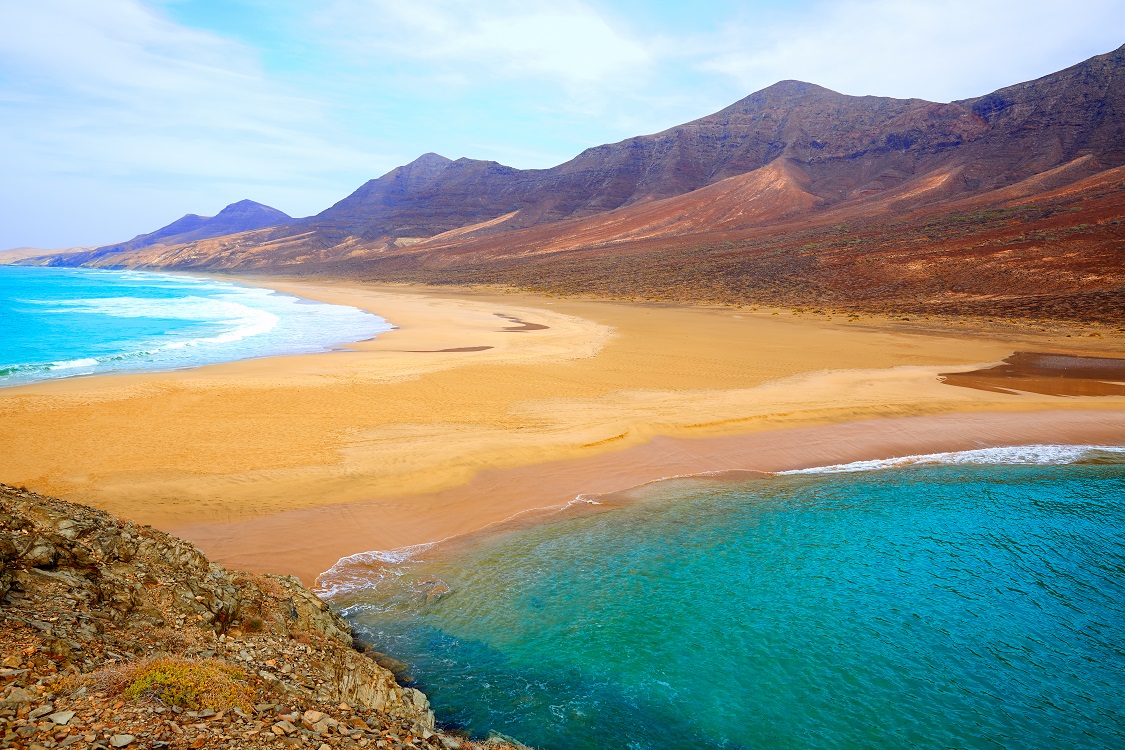
- Tenerife: Offers a mix. The south has popular golden sand beaches (some artificially imported, like Playa de las Teresitas near Santa Cruz), while the north features dramatic black sand beaches, often wilder and more exposed to Atlantic waves (e.g., El Bollullo, Benijo).
- Gran Canaria: Famous for the vast golden dunes of Maspalomas in the south, creating a desert-like landscape. Other southern beaches are golden and family-friendly (e.g., Playa del Inglés), while the north has smaller coves and some black sand beaches.
- Lanzarote: Characterised by its unique volcanic beaches. Playa Blanca and Papagayo (a series of unspoiled coves) in the south have stunning golden sand and clear waters. However, many other beaches are striking black sand (e.g., El Golfo, Playa Quemada), offering a dramatic contrast.
- Fuerteventura: The undisputed champion of long, expansive golden sandy beaches. Its coastline is blessed with miles of unspoiled, wide beaches, perfect for watersports and relaxation (e.g., Sotavento, Cofete). The sand is generally fine and light-coloured.
- La Palma, La Gomera, El Hierro: Primarily feature dramatic black sand beaches, often set against rugged cliffs, offering a wilder and more natural experience. These are less about sunbathing and more about dramatic scenery and unique swimming spots.
Similarities and Differences: Both archipelagos offer a huge variety of beaches, from bustling resort fronts to secluded coves. The main difference lies in the dominant sand colour and the surrounding landscape. The Balearics generally offer the classic Mediterranean 'white sand and blue sea' aesthetic, while the Canaries provide a more dramatic, often volcanic-influenced, palette of black, red, and golden sands, with bigger waves from the Atlantic.
Climate Contrasts: Mediterranean Sunshine vs. Perpetual Spring
The weather is often a decisive factor for those considering a holiday, and here, the Balearics and Canaries present distinctly different climates.
Balearic Islands Weather: Experience a typical Mediterranean climate characterised by hot, dry summers and mild, somewhat wetter winters.
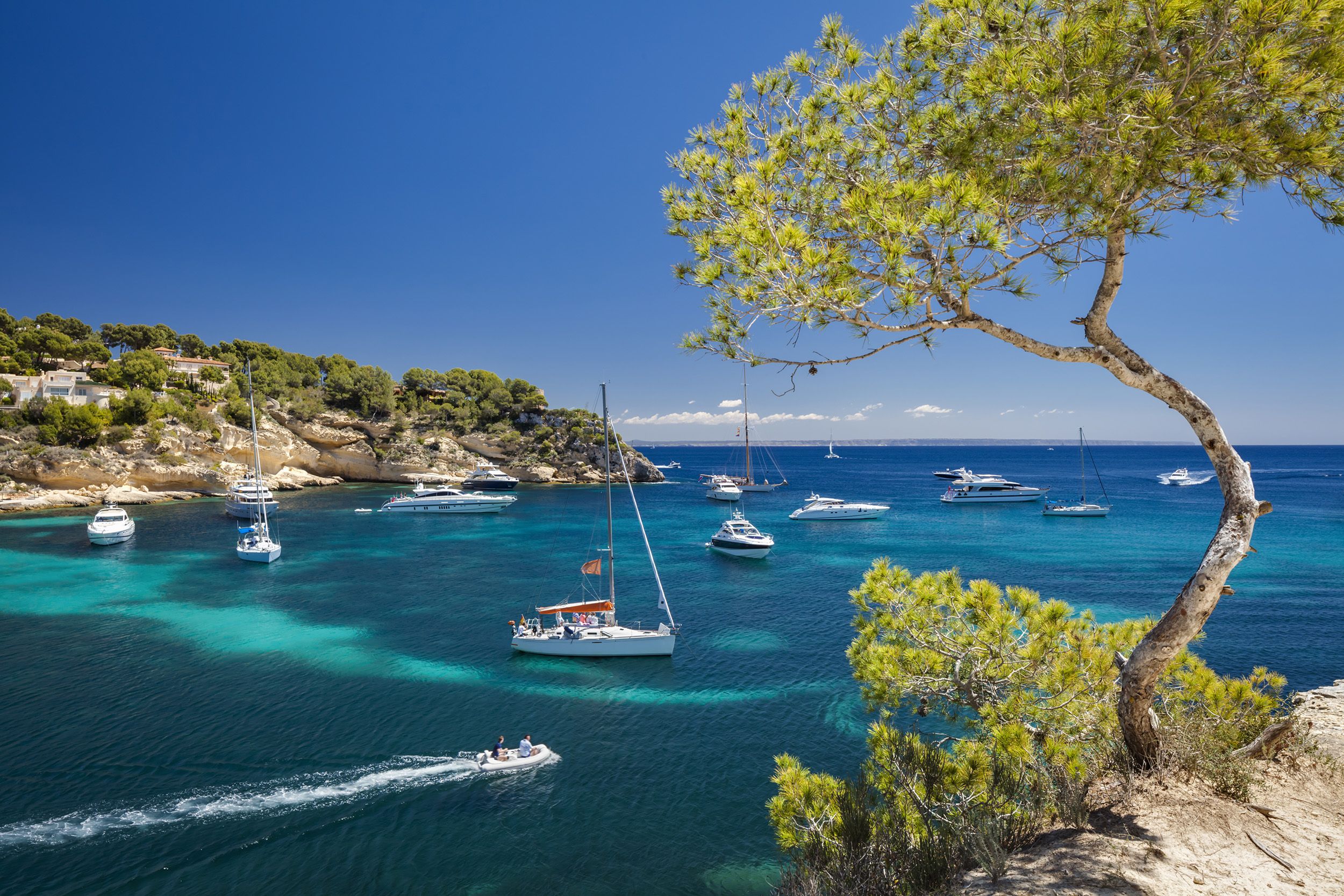
- Summers (June to August): Hot and sunny, with average daily temperatures ranging from 25∘C to 30∘C, often peaking higher. Humidity can be present, and rainfall is rare. Perfect for beach holidays and outdoor activities.
- Autumn (September to November): Temperatures gradually cool, from the low 20s∘C in September to 15∘C to 20∘C in November. There's an increased chance of rainfall, particularly in October, which can sometimes be heavy.
- Winters (December to February): Mild, with average daily temperatures around 10∘C to 15∘C. While it rarely freezes, nights can be cool. There are sunny days, but also periods of cloudiness and rain.
- Spring (March to May): Temperatures steadily rise, from around 15∘C in March to 20∘C to 25∘C in May. The islands blossom, and it's a pleasant time with less intense heat and moderate rainfall.
The Balearics experience distinct seasons, with significant temperature fluctuations throughout the year.
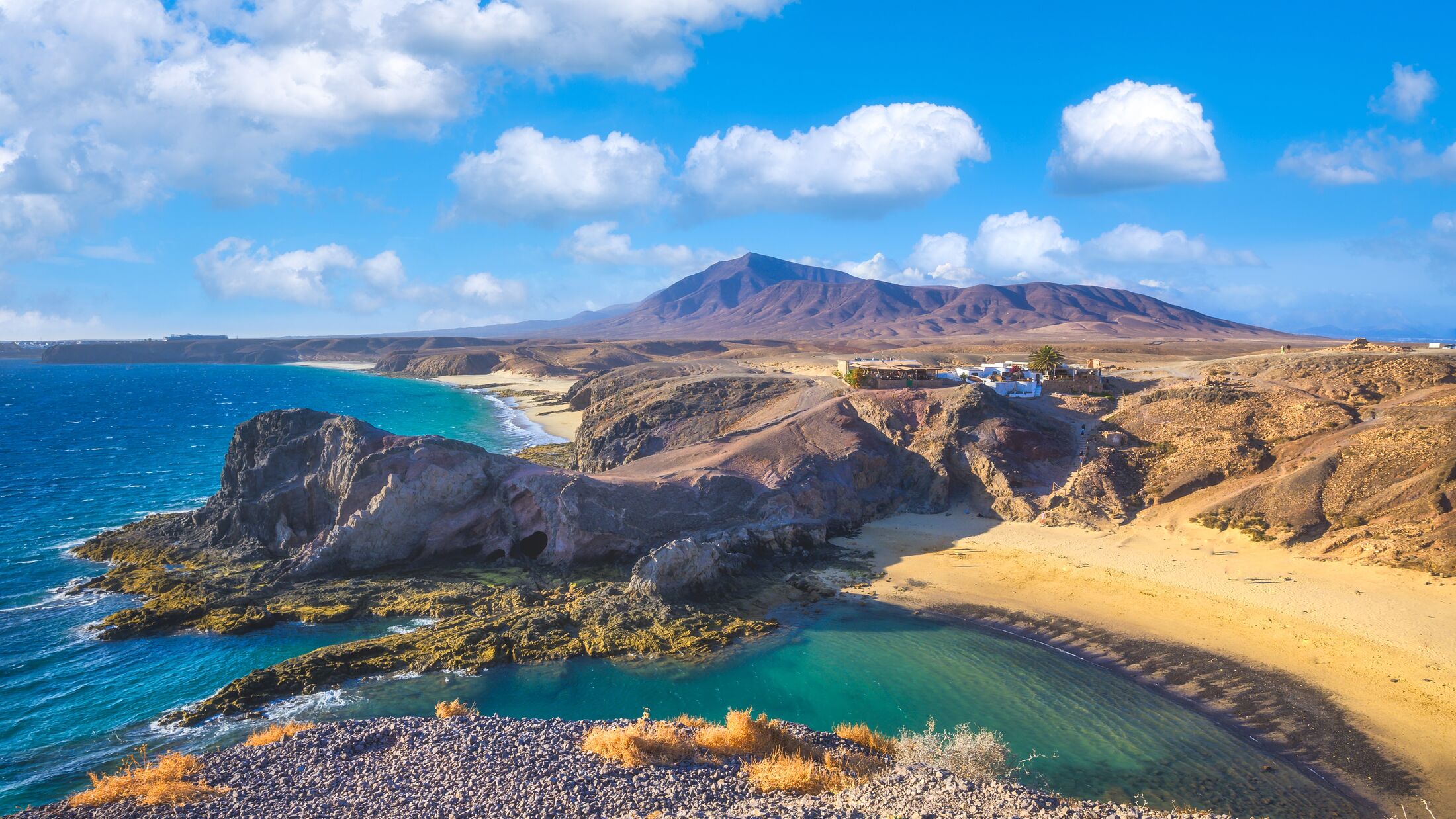
Canary Islands Weather: Famous for their "eternal spring" climate, meaning stable, pleasant temperatures year-round with less seasonal variation than the Balearics. This is due to their proximity to the African coast and the influence of the Azores High and trade winds.
- Temperatures: Average daily temperatures generally hover between 20∘C and 25∘C throughout the year, with very little deviation between summer and winter. The south of the islands (e.g., south Tenerife, south Gran Canaria, Fuerteventura, Lanzarote) tends to be slightly warmer and sunnier due to shielding from the trade winds by mountainous terrain.
- Rainfall: Generally very low, especially in the southern parts of the islands. When it does rain, it's typically short-lived and more frequent in the northern, greener areas and during the winter months.
- Sunshine: Abundant year-round.
- Winds: The trade winds are a constant feature, especially in Fuerteventura, making it ideal for wind sports but also providing a refreshing breeze that mitigates the heat.
Differences: The most significant difference is the lack of extreme seasonal variation in the Canaries. If you crave consistent warmth and sunshine every day of the year, the Canaries are a clear winner. The Balearics offer a more traditional four-season experience, with hot summers and cooler, wetter winters, making them perhaps more appealing to those who appreciate seasonal changes and don't mind cooler periods. For year-round outdoor living and activities, the Canaries' climate is often preferred.
Property Prices
For those considering a longer stay or investing in a holiday home, property is a major consideration. Generally speaking, the Balearics tend to be more expensive, particularly for prime locations and luxury properties.
Balearic Islands Property Market: The Balearics are considered a premium property market within Spain, often commanding higher prices due to their established tourism and desirability.
- Mallorca: Palma and its surrounding areas, as well as the southwest coast (e.g., Port Andratx, Santa Ponsa), are among the most expensive areas in Spain. Rural properties in the centre and north can also be pricey.
- Ibiza: Commands some of the highest property prices in Spain, particularly for villas and luxury homes. The island's global reputation drives prices upwards.
- Menorca: Generally more affordable than Majorca and Ibiza, but still considered a high-value market.
- Formentera: Due to its small size and strict building regulations, property is extremely rare and exceptionally expensive.
Canary Islands Property Market: While certainly not 'cheap', the Canary Islands generally offer more accessible property prices compared to the Balearics, especially when considering the excellent year-round climate.
- Tenerife: The most active market in the Canaries. The south (e.g., Costa Adeje, Los Cristianos) is popular with tourists, and prices here are higher, particularly for apartments and villas with sea views. The north tends to be more affordable.
- Gran Canaria: Similar to Tenerife, the south (e.g., Maspalomas, Mogán) is more expensive due to tourism, while the capital, Las Palmas, offers a range of urban apartments.
- Lanzarote: Property prices have seen steady growth but remain generally lower than in the prime areas of Tenerife and Gran Canaria. Puerto del Carmen, Playa Blanca, and Costa Teguise are popular coastal areas.
- Fuerteventura: Often considered one of the more affordable islands in the Canaries, particularly inland or in smaller coastal towns.
- La Palma, La Gomera, El Hierro: These smaller, greener islands generally have the most affordable property prices in the Canaries, appealing to those seeking a quieter, more authentic island life away from mass tourism.
Differences: The Balearics, particularly Majorca and Ibiza, operate at a significantly higher price point, attracting a more affluent buyer base. The Canaries offer a wider range of prices, making property ownership more attainable for a broader spectrum of budgets, especially in the less touristy areas or on the smaller islands. If budget is a primary concern for a holiday home or a longer stay, the Canaries generally offer more for your money.
Cost of Living: Everyday Expenses Compared
Beyond property, the cost of daily life is a crucial factor for tourists, especially for longer stays. While both archipelagos are part of Spain, and therefore benefit from EU pricing on many goods, subtle differences can impact your holiday budget.
Balearic Islands Cost of Living: Generally higher than mainland Spain and, in many aspects, higher than the Canary Islands. This is due to several factors:
- Tourism Impact: High demand from tourism drives up prices for many goods and services, especially in peak season.
- Island Logistics: Goods often need to be imported, incurring higher transport costs.
- Groceries: Supermarket prices can be slightly elevated compared to the mainland. Local markets might offer better value for fresh produce.
- Dining Out/Entertainment: Expect higher prices in restaurants, bars, and for activities, particularly in tourist hotspots.
Canary Islands Cost of Living: Generally lower than the Balearic Islands, and in some aspects, even lower than mainland Spain. This is largely due to their unique tax regime.
- Canary Islands Special Zone (ZEC): The Canaries benefit from a special economic and fiscal regime (REF) that includes lower VAT (IGIC - Impuesto General Indirecto Canario) at a general rate of 7% compared to Spain's 21% VAT. This directly impacts the price of many goods and services.
- Groceries: Often more affordable than the Balearics due to the lower IGIC. Local produce can be very reasonably priced.
- Dining Out/Entertainment: Generally more affordable than the Balearics, especially in non-touristy areas.
- Fuel: Significantly cheaper than mainland Spain and the Balearics due to the lower tax on hydrocarbons. This is a noticeable saving for car rental.
Differences: The most significant factor in the difference in cost of living is the tax regime (IGIC vs. VAT), which makes most consumer goods, services, and fuel cheaper in the Canaries. While both are Spanish islands, the Canaries generally offer a more economical holiday or living experience, particularly for everyday expenses and fuel.
Travel Times from Main European Cities
The duration of travel is a key consideration for tourists, especially those planning short breaks or with limited travel time.
Balearic Islands Travel Times: Due to their Mediterranean location, the Balearics are relatively quick and easy to reach from most major European cities.
- Flight Durations (from London, as an example):
- Mallorca (Palma de Mallorca Airport - PMI): Approximately 2 hours 15 minutes to 2 hours 30 minutes.
- Ibiza (Ibiza Airport - IBZ): Approximately 2 hours 15 minutes to 2 hours 30 minutes.
- Menorca (Mahon Airport - MAH): Approximately 2 hours 15 minutes to 2 hours 30 minutes.
- Frequency: High frequency of direct flights, especially during the summer season, from numerous European cities. Even in winter, there are good connections.
- Accessibility: Their proximity to mainland Spain also means easy ferry connections from Barcelona, Valencia, and Denia, offering an alternative travel option for those who prefer not to fly or wish to bring a car.
Canary Islands Travel Times: Being further out in the Atlantic, the Canary Islands require longer flight durations from mainland Europe.
- Flight Durations (from London, as an example):
- Tenerife (Tenerife South Airport - TFS; Tenerife North Airport - TFN): Approximately 4 hours to 4 hours 30 minutes.
- Gran Canaria (Gran Canaria Airport - LPA): Approximately 4 hours to 4 hours 30 minutes.
- Lanzarote (Lanzarote Airport - ACE): Approximately 4 hours to 4 hours 15 minutes.
- Fuerteventura (Fuerteventura Airport - FUE): Approximately 4 hours 15 minutes to 4 hours 30 minutes.
- La Palma (La Palma Airport - SPC): Approximately 4 hours 30 minutes to 5 hours (often requiring a connection in Tenerife or Gran Canaria for direct flights from smaller European cities).
- La Gomera (La Gomera Airport - GMZ) & El Hierro (El Hierro Airport - VDE): Require an internal flight connection from Tenerife North, adding significant travel time.
- Frequency: While popular, the frequency of direct flights from European cities might be slightly less in the quieter months compared to the Balearics, though major islands still have good connections.
- Accessibility: No direct ferry connections from mainland Europe; all travel is by air or via cruise. Internal island hopping is common via ferry or inter-island flights for tourists wishing to explore multiple islands.
Differences: The Balearics are significantly closer to main European cities, meaning shorter flight times (around half) and often more frequent and potentially cheaper flights, especially for short breaks. If quick, easy access from Europe is a high priority, the Balearics offer a distinct advantage. The Canaries, while very accessible by air, require a longer commitment for travel, making them more suitable for longer holidays.
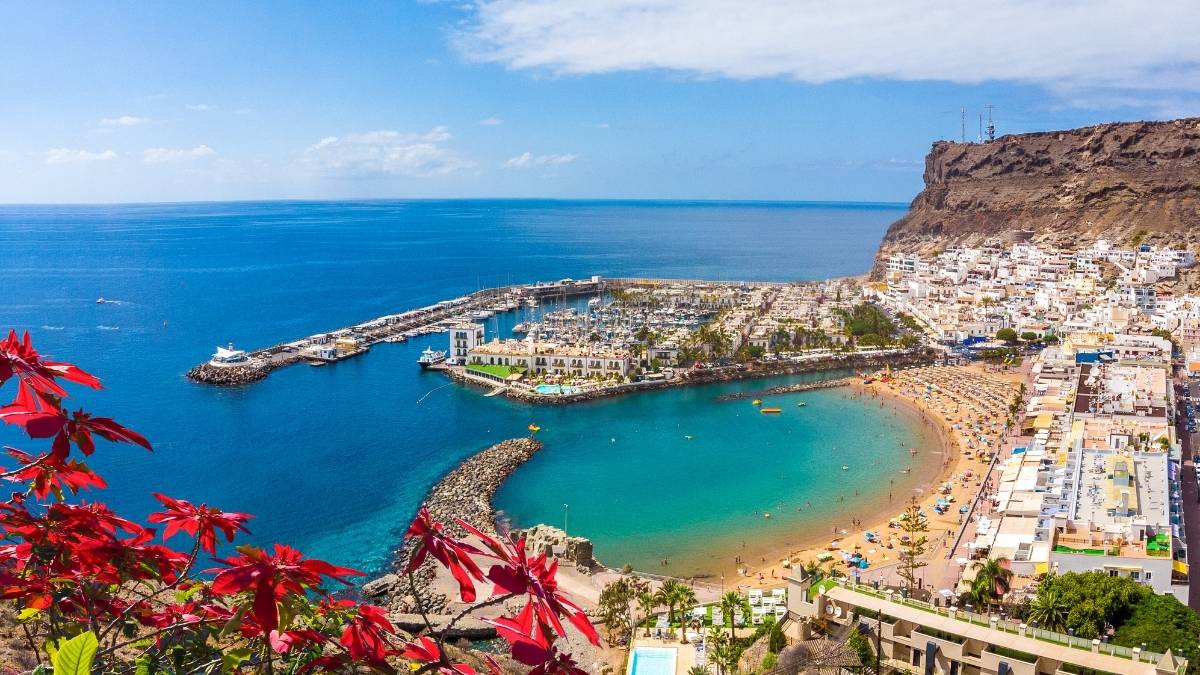
Culinary Delights: A Taste of the Islands
Food is an integral part of any holiday experience, and both archipelagos offer distinct culinary adventures, influenced by their geographical location and historical ties.
Balearic Islands Food: Rooted in classic Mediterranean cuisine, with strong Catalan influences and an emphasis on fresh seafood, pork, and local produce.
- Sopas Mallorquinas: A hearty dish of thinly sliced bread, vegetables (cabbage, cauliflower, beans), and often meat, simmered in a rich broth.
- Frito Mallorquín: A traditional Majorcan dish made with fried lamb or pork (or sometimes seafood), potatoes, peppers, onions, and often offal.
- Arroz Brut: Literally "dirty rice," a soupy rice dish with meat (pork, rabbit, chicken), vegetables, and saffron.
- Sobrasada: A raw, cured sausage from Majorca, made from ground pork, paprika, salt, and other spices, often spread on bread.
- Ensaimada: A coiled pastry, iconic of Majorca, dusted with icing sugar. It comes in various sizes and can be filled with cream, chocolate, or pumpkin jam.
- Seafood: Abundant and fresh, including grilled fish, paella, and various seafood stews.
- Wine: Local wines are gaining recognition, particularly from Majorca.
- Olives & Olive Oil: Excellent quality, reflecting the Mediterranean climate.
Canary Islands Food: Characterised by simpler, more rustic flavours, with influences from Latin America and North Africa, alongside traditional Spanish elements. Fresh fish and local produce are key.
- Papas Arrugadas con Mojo: "Wrinkled potatoes" boiled in salty water until tender, served with two traditional sauces: Mojo Rojo (red, spicy, made with paprika, garlic, and chilli) and Mojo Verde (green, made with coriander or parsley, garlic, and olive oil). This is arguably the most iconic Canarian dish.
- Gofio: A versatile flour made from roasted grains (wheat, barley, corn). It's a staple and used in various ways: as a thickener for stews, mixed with milk for breakfast, or kneaded into a dough-like consistency.
- Fresh Fish & Seafood: Given the islands' Atlantic location, fresh fish is paramount. Common dishes include Pescado a la Sal (salt-baked fish), grilled sardines, and various seafood stews.
- Sancocho Canario: A salted fish stew, typically with dried fish (often cod), potatoes, sweet potatoes, and served with mojo.
- Bienmesabe: A sweet, paste-like dessert made from almonds, honey, egg yolks, and lemon zest.
- Canarian Cheeses: Excellent goat and sheep cheeses, particularly from Fuerteventura and La Palma, with distinct flavours.
- Tropical Fruits: Due to the climate, a wider variety of tropical fruits are grown, including bananas (Plátano de Canarias), papayas, mangoes, and avocados.
- Canarian Wines: Distinctive wines, particularly from Lanzarote (from vines grown in volcanic ash) and La Palma.
Differences: The Balearic cuisine leans more towards a classic Mediterranean diet with richer, often pork-based dishes, and a strong emphasis on olive oil and cured meats. The Canarian diet is simpler, with a focus on fresh fish, potatoes, and the ubiquitous mojo sauces. The use of gofio and a wider array of tropical fruits are also defining characteristics of Canarian food, reflecting its unique climate and historical connections. If you prefer rich, traditional Spanish/Mediterranean flavours, the Balearics might appeal more. If you enjoy fresh, lighter, and more unique island flavours with a hint of spicy zest, the Canaries will be a culinary adventure.
Are the Balearic or Canary Islands Better?
There is no single "better" island group; the choice hinges entirely on your personal preferences...
Choose the Balearic Islands if:
- You prefer a classic Mediterranean climate: Hot, dry summers and cooler, distinct winters, perfect for summer beach holidays.
- You value shorter flight times from mainland Europe: Ideal for weekend breaks or shorter holidays.
- You are looking for a more established European holiday feel: With vibrant resorts, historical towns, and diverse entertainment options.
- You appreciate a more refined, upscale environment: Particularly in Majorca and Ibiza, which offer luxury resorts and fine dining.
- You enjoy the Mediterranean culinary style: With its emphasis on fresh seafood, cured meats, and traditional Spanish dishes.
- You love white/golden sand beaches and calm, turquoise waters.
Choose the Canary Islands if:
- You crave year-round sunshine and a stable, mild climate: The "eternal spring" is perfect for winter sun holidays or consistent pleasant weather.
- You are seeking a more affordable holiday: Thanks to the lower IGIC tax impacting the cost of goods and services.
- You appreciate a more diverse, dramatic, and volcanic landscape: With black, red, and golden sand beaches, and unique natural wonders like volcanoes and lava fields.
- You enjoy outdoor activities year-round: Hiking, watersports (especially windsurfing and kitesurfing), and exploring unique natural parks are more comfortable in the consistent climate.
- You prefer a mix of European and more unique island influences in your cuisine: With fresh fish, mojo sauces, and tropical fruits.
- You don't mind longer flight times from mainland Europe, as the consistent warm weather often justifies the extra travel.
- You appreciate the unique and distinct character of each island, offering a vast array of experiences within one archipelago, ideal for island hopping.
Final Thoughts:
Both the Balearic and Canary Islands offer an exceptional holiday experience, stunning natural beauty, and a welcoming culture. Your decision will ultimately come down to the nuances: do you prefer the quintessential Mediterranean charm, or the unique, perpetual spring of the Atlantic? Do you prioritise quick European accessibility, or do you value a more affordable holiday and dramatic landscapes? Consider visiting both, if possible, to truly experience their distinct atmospheres.
 0
Like
Published at 11:22 AM Comments (3)
0
Like
Published at 11:22 AM Comments (3)
Driving in Spain - All you need to know
Friday, May 23, 2025
Navigating Spain's roads as a foreign visitor requires a comprehensive understanding of its traffic laws and regulations to ensure a safe, compliant, and enjoyable journey. This guide summarises the essential rules, from fundamental driving practices to specific requirements for parking, child safety, and navigating urban zones.

Fundamental Driving Rules and Safety
In Spain, vehicles operate on the right side of the road. Safety belts are mandatory for all occupants, both front and rear. The use of mobile phones while driving is strictly forbidden without a hands-free device, and physically handling a device is prohibited. Motorcyclists may use certified wireless devices integrated into their helmets for communication or navigation, provided safety is not compromised. Overtaking is only permitted on the left side of the vehicle being overtaken. Helmets are mandatory for riders of motorbikes, mopeds, and bicycles. Visitors should also be aware that electric scooters are subject to specific regulations that can vary by municipality.
Speed Limits and Alcohol Regulations
Spain enforces clear speed limits based on road type :
-
Dual carriageways and motorways: 120 km/h.
-
Conventional roads: 90 km/h.
-
Urban areas: Range from 20 to 50 km/h, depending on specific signage and street design.
Strict alcohol limits are in place for drivers :
-
General drivers: 0.5 grams per litre (g/l) of alcohol in blood, or 0.25 milligrams per litre (mg/l) in exhaled air.
-
Professional and novice drivers (less than two years of experience): 0.3 g/l in blood, or 0.15 mg/l in exhaled air. These low limits imply a near-zero tolerance for impaired driving, making it safest for drivers to abstain from alcohol entirely.
Child Safety in Vehicles: Car Seats and Restraints
Spain has rigorous laws concerning child safety in vehicles. Children under 135 centimetres (approx. 5 feet) in height must use an approved child restraint system (CRS) suitable for their height and weight. It is recommended that children continue using a restraint system with a back until they exceed 150 centimetres. Infants must be secured in an approved, rear-facing car seat until they reach 9 kilograms (around one year of age), with a strong recommendation to remain rear-facing for as long as possible, ideally up to four years or 18 kilograms.
Children under 135 cm are not permitted to sit in the front seat unless all rear seats are already occupied by other children in car seats. If a child must occupy the front passenger seat under this exception, an appropriate CRS must be used, and the vehicle's airbag on that side must be deactivated.
For taxis, child car seats are not legally required for city trips within urban limits, though highly recommended for safety. However, if a taxi journey involves intercity motorways, the same car seat rules as private vehicles apply. Other transfer services like Uber and Cabify typically require a child to be in a car seat or for one to be reserved in advance. All car seats used in Spain must hold ECE R44/R129 approval. The Isofix system has been obligatory in all newly manufactured cars since 2021, simplifying installation. For tourists renting cars, it is a legal requirement that an appropriate car seat be provided for children under 1.35m tall.
Parking Regulations and Zones
Parking in Spanish cities is often regulated and not always free. Parking spaces are commonly delineated by colored lines, each with specific rules :
-
White Lines (Zona Blanca): Typically denote free parking spaces, though they can be hard to find in city centres.
-
Blue Lines (Zona Azul): Indicate paid parking areas with limited duration. Payment must be made at a parking meter, and the ticket displayed on the dashboard.
-
Green Lines (Zona Verde): Primarily reserved for residents of a specific neighborhood. Visitors are generally not permitted to use these spaces and risk a fine.
-
Yellow Lines: Unequivocally indicate parking bans. Parking here is strictly prohibited and can lead to fines or towing.
To avoid parking fines, it is crucial to pay attention to signs, use official parking areas, check parking hours, consider pre-booking parking, display tickets clearly, adhere to time limits, and avoid disabled spots.
Traffic Fines: Understanding, Payment, and Appeals
Official notifications of fines are primarily issued by post by the Directorate-General for Traffic (DGT), or published on the Tablón Edictal (TEU) if the driver's address is unknown. Electronic notifications are also possible via the Dirección Electrónica Vial (DEV).
Drivers must be vigilant against traffic fine scams, which often involve SMS or email messages with direct payment links, misspellings, or a lack of key information like file or vehicle registration numbers. Authenticity should always be verified directly with the issuing authority (DGT, town hall, or regional government) through official channels.
Regarding payment procedures and discounts: A 50% reduction is available if the driver acknowledges responsibility and pays within a voluntary period of 20 calendar days from notification. Paying within this period waives the right to appeal. If unpaid or unappealed within 20 days, the fine enters the ordinary procedure, allowing an additional 45 days for full (100%) payment. Unpaid fines after this period are forwarded to the State Agency for Tax Administration with an additional 20% surcharge.
The process for appealing a fine is structured: An initial objection can be lodged within 20 calendar days of notification, but this forfeits the 50% discount. If the objection is rejected, a driver can pursue an appeal for reconsideration within one month. If still unresolved, a contentious-administrative appeal can be made directly to court, requiring a lawyer and solicitor. A new EU Directive (2024/3237) aims to strengthen drivers' rights by stipulating that fine notifications should be in plain language, explain the offense and options, and be available in the vehicle's country of registration language.
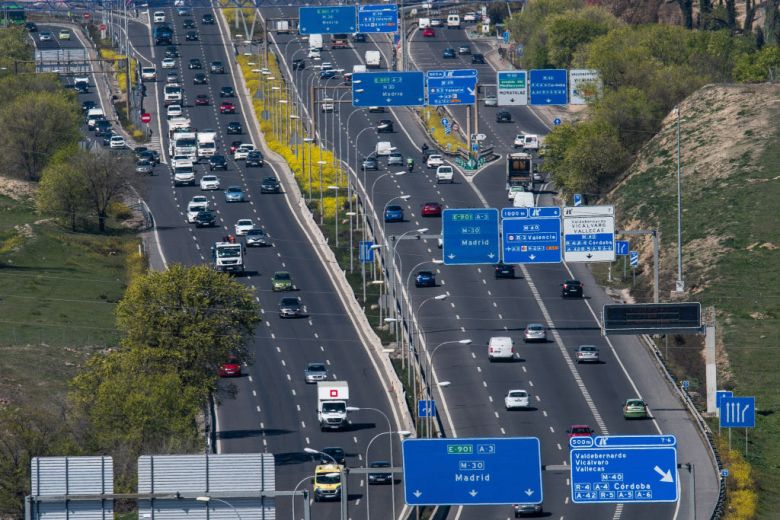
Mandatory Vehicle Equipment and Documentation
The minimum driving age in Spain is 18 years. Several items are mandatory vehicle equipment :
-
One Reflective Vest: Must be worn if exiting the vehicle on interurban roads during an emergency and stored inside the car.
-
Two Warning Triangles: Mandatory to carry. One placed 50 meters in front and one 50 meters behind on two-way roads; only rear on one-way or multi-lane roads.
-
Flashing Light Signal (V-16 device): Since July 1, 2021, this orange flashing light can be used in place of triangles. It is placed on the highest part of the vehicle for safety. A transition period allows both until January 1, 2026, after which the V-16 light signal with geolocation will be the sole permitted device.
-
Beam Deflectors: Necessary for UK-registered vehicles to adjust headlight beams for right-hand driving.
-
UK Sticker or UK Symbol on Number Plate: Required for UK-registered vehicles. Recommended items include spare bulbs and a spare wheel or puncture repair kit.
Several required documentation items must be carried :
-
Valid Driving License: EU licenses are valid. For non-EU licenses, an International Driving Permit (IDP) is recommended and must be presented alongside the national license.
-
Vehicle Registration Documents: V5C logbook for personal vehicles or the rental contract for hired vehicles.
-
Proof of Insurance: While number plates serve as proof for EU-insured vehicles, carrying the receipt and full insurance documentation is advisable. A Green Card is recommended but not mandatory.
-
Vehicle Technical Inspection (ITV): Personal vehicles must have a valid ITV certificate; driving without one incurs a fine.
Toll Roads and Low Emission Zones (LEZs)
Spain's motorway network includes both toll roads and toll-free expressways. Toll roads, known as Autopistas, are privately managed and identified by blue motorway signs with "AP" or "PEAJE". Publicly managed Autovías are generally toll-free. Toll amounts vary by vehicle type, distance, and sometimes time or payment method.
Various payment methods are available at toll stations: cash, widely accepted debit/credit cards, and electronic tolls (OBE/Bip & Go badge / VIA-T / Telepeaje). Drivers without an electronic device should avoid lanes marked solely "VIA-T" or "Telepeaje". Some regions, like the Basque Country, use free-flow toll systems requiring advance license plate registration linked to a bank card or a compatible toll tag. Non-payment can lead to additional interest and fees.
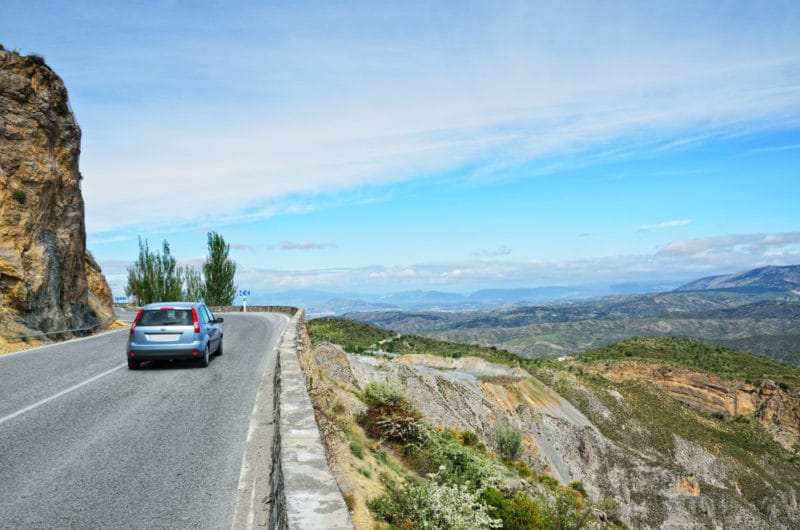
Low Emission Zones (ZBEs - Zonas de Bajas Emisiones) are increasingly prevalent, particularly in major cities like Madrid and Barcelona, aiming to improve urban air quality. As of January 1, 2024, there are 149 cities in Spain with established LEZs, including all municipalities with a population exceeding 50,000.
Spain classifies vehicles based on DGT environmental stickers (Distintivos Ambientales), which dictate LEZ access :
-
Zero Emissions (Blue): Electric, hydrogen, plug-in hybrids (>40km range) – unrestricted access.
-
ECO (Green & Blue): Mild hybrids, LPG, natural gas, plug-in hybrids (<40km range) – generally good access.
-
C (Green): Newer petrol (from 2006), diesel (from 2014) – access depends on city rules.
-
B (Yellow): Older petrol (2000-2006), diesel (2006-2014) – most limited access.
-
A (No sticker): Older, non-compliant vehicles – banned from all ZBEs.
A critical point for foreign-plated vehicles in LEZs is that they are not eligible for Spanish DGT environmental stickers. To gain entry to ZBEs in cities like Barcelona and Madrid, foreign cars must be registered to confirm their emissions category and apply for authorisation before driving within these restricted areas. While some European environmental stickers may be considered for equivalency, this is not universally guaranteed. Compliance is monitored automatically, and fines for violations start at €200.
Key Takeaways for a Safe Trip
Driving in Spain as a foreign visitor demands proactive preparation. Prioritising familiarity with Spanish driving regulations, including mandatory equipment, documentation, and urban zone restrictions, is essential. Safety must be paramount, with strict adherence to speed limits, stringent alcohol limits, and comprehensive child safety regulations. Navigating parking wisely by understanding colour-coded zones is crucial to avoid fines. Vigilance against traffic fine scams and planning for urban access, especially concerning Low Emission Zones and their registration requirements for foreign vehicles, are also vital. A quick check for the latest updates before a trip can ensure complete compliance and a stress-free journey.
 0
Like
Published at 8:04 PM Comments (1)
0
Like
Published at 8:04 PM Comments (1)
Most relaxing areas to retire in Spain, away from the crowds.
Friday, April 18, 2025
Spain has long been a favourite destination for retirees seeking sun, sea, and a laid-back lifestyle. However, many of the well-known coastal areas have become increasingly crowded and touristy over the years. For those looking to escape the hustle and bustle and truly embrace the tranquil Spanish way of life, there are still plenty of hidden gems to be found. In this article, we'll explore some of the most relaxing areas to retire in Spain, far from the madding crowd.
Before we delve into specific locations, it's worth considering why Spain remains such an attractive option for retirees. The country boasts a fantastic climate, with long, sunny summers and mild winters in many regions. The cost of living is generally lower than in many other Western European countries, and the healthcare system is excellent. Add to this the rich culture, delicious cuisine, and warm, welcoming locals, and it's easy to see why Spain continues to draw retirees from around the world.
However, the key to finding true relaxation in retirement is often about discovering those lesser-known areas that offer all the benefits of Spanish living without the drawbacks of over-tourism. Let's explore some of these hidden treasures.
Costa de la Luz, Andalusia
While many flock to the Costa del Sol, those in the know head west to the Costa de la Luz. This "Coast of Light" in Andalusia offers miles of pristine beaches, charming white-washed villages, and a more authentic Spanish experience.
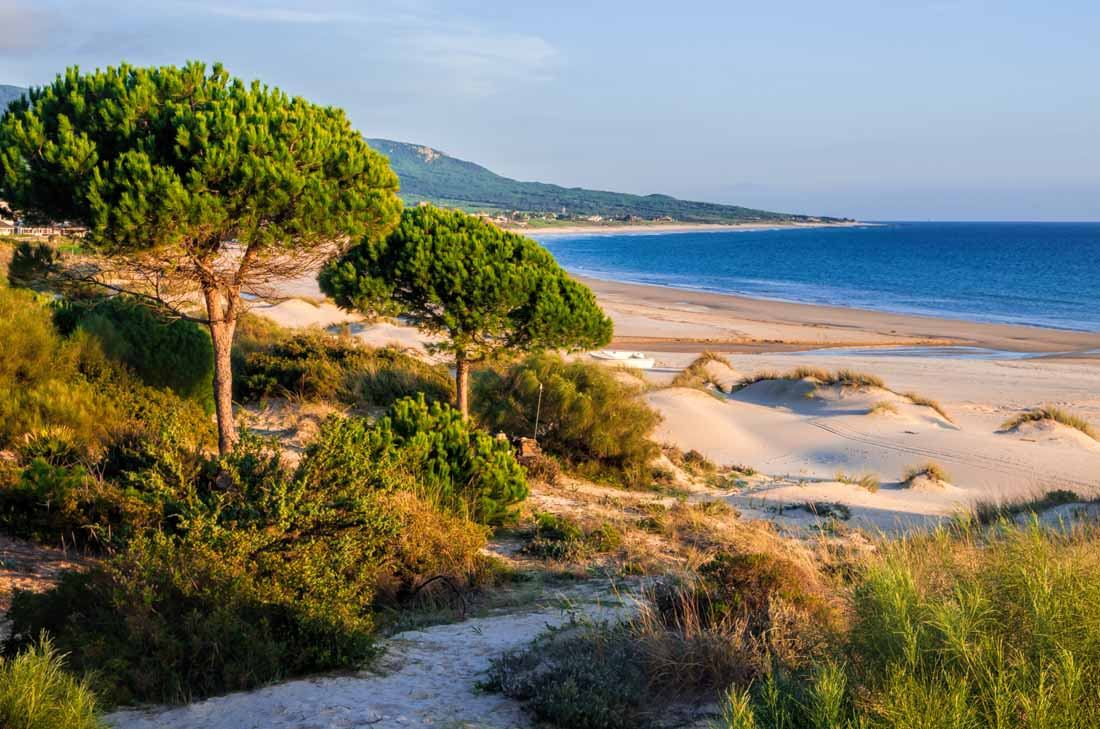
Highlights:
Conil de la Frontera: A picturesque town with beautiful beaches and a relaxed vibe.
Vejer de la Frontera: A hilltop white village with stunning views and a rich history.
Doñana National Park: A vast natural reserve perfect for birdwatching and nature walks.
The Costa de la Luz offers a slower pace of life, with plenty of opportunities for outdoor activities and cultural experiences. The area is less developed than other coastal regions, meaning you can enjoy unspoiled beaches and a more traditional way of life.
Sierra de Gredos, Castilla y León
For those who prefer mountains to beaches, the Sierra de Gredos in central Spain offers breathtaking scenery and a tranquil retreat from the world.

Highlights:
Arenas de San Pedro: A charming town nestled in the mountains with a rich cultural heritage.
Navarredonda de Gredos: A small village perfect for hiking and nature enthusiasts.
La Plataforma: A stunning viewpoint offering panoramic vistas of the mountain range.
The Sierra de Gredos is ideal for retirees who enjoy outdoor activities such as hiking, birdwatching, and stargazing. The clean mountain air and peaceful surroundings make it a perfect place to unwind and embrace a slower pace of life.
Maestrazgo, Aragon
The Maestrazgo region in Aragon is one of Spain's best-kept secrets. This rugged, mountainous area is dotted with medieval villages and offers a glimpse into Spain's rich history.
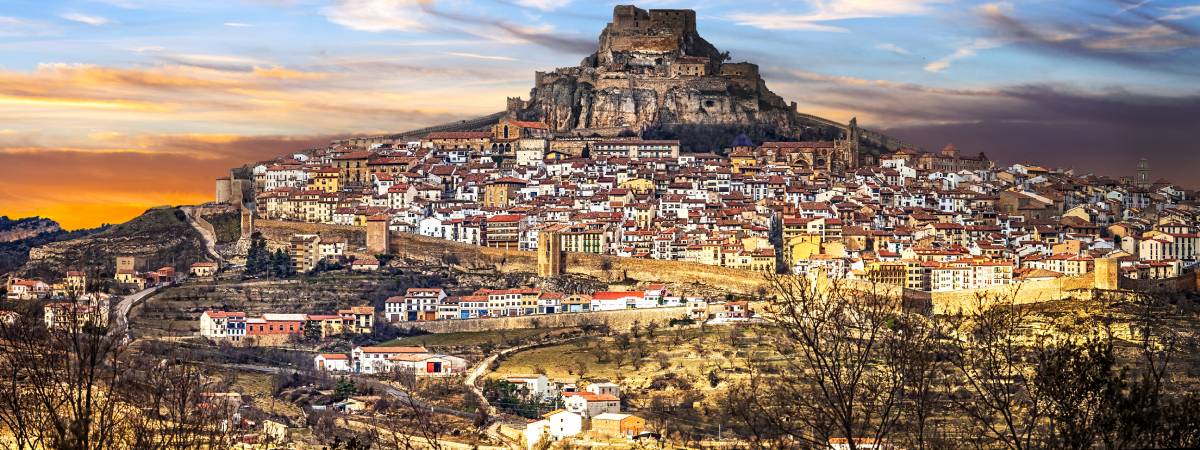
Highlights:
Cantavieja: A beautifully preserved medieval town with stunning architecture.
Mirambel: A small village surrounded by ancient walls, offering a step back in time.
Iglesuela del Cid: Home to impressive Renaissance buildings and a peaceful atmosphere.
The Maestrazgo region is perfect for retirees who appreciate history, architecture, and a quiet way of life. The area is relatively undiscovered by tourists, allowing for a truly authentic Spanish experience.
Ribeira Sacra, Galicia
In the lush, green region of Galicia, the Ribeira Sacra offers a unique retirement destination. Known for its deep river canyons, ancient monasteries, and excellent wines, this area provides a peaceful retreat in a stunning natural setting.
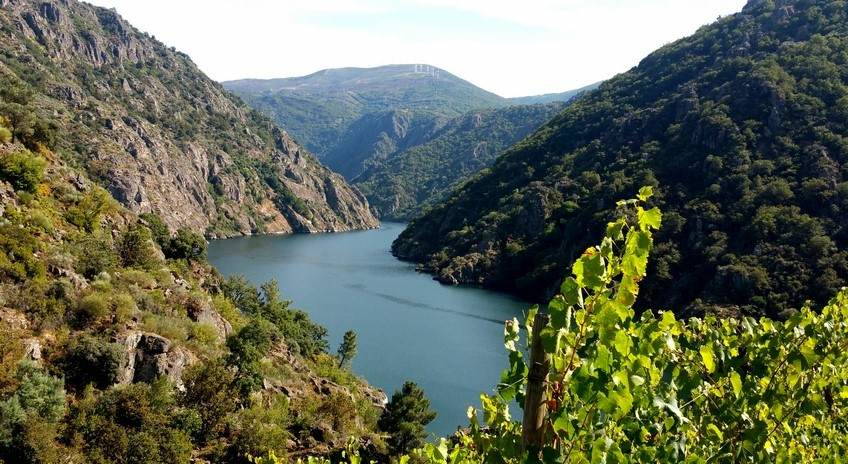
Highlights:
Monforte de Lemos: A charming town with a rich history and excellent local cuisine.
Sil Canyon: Breathtaking views and boat trips through dramatic gorges.
Santo Estevo de Ribas de Sil: A former monastery turned luxury hotel, perfect for a special treat.
The Ribeira Sacra is ideal for retirees who appreciate good food and wine, beautiful landscapes, and a cooler climate than southern Spain. The area's Celtic heritage adds an interesting cultural dimension to life here.
Albarracín, Aragon
Often described as one of the most beautiful villages in Spain, Albarracín in the province of Teruel offers a magical setting for retirement.
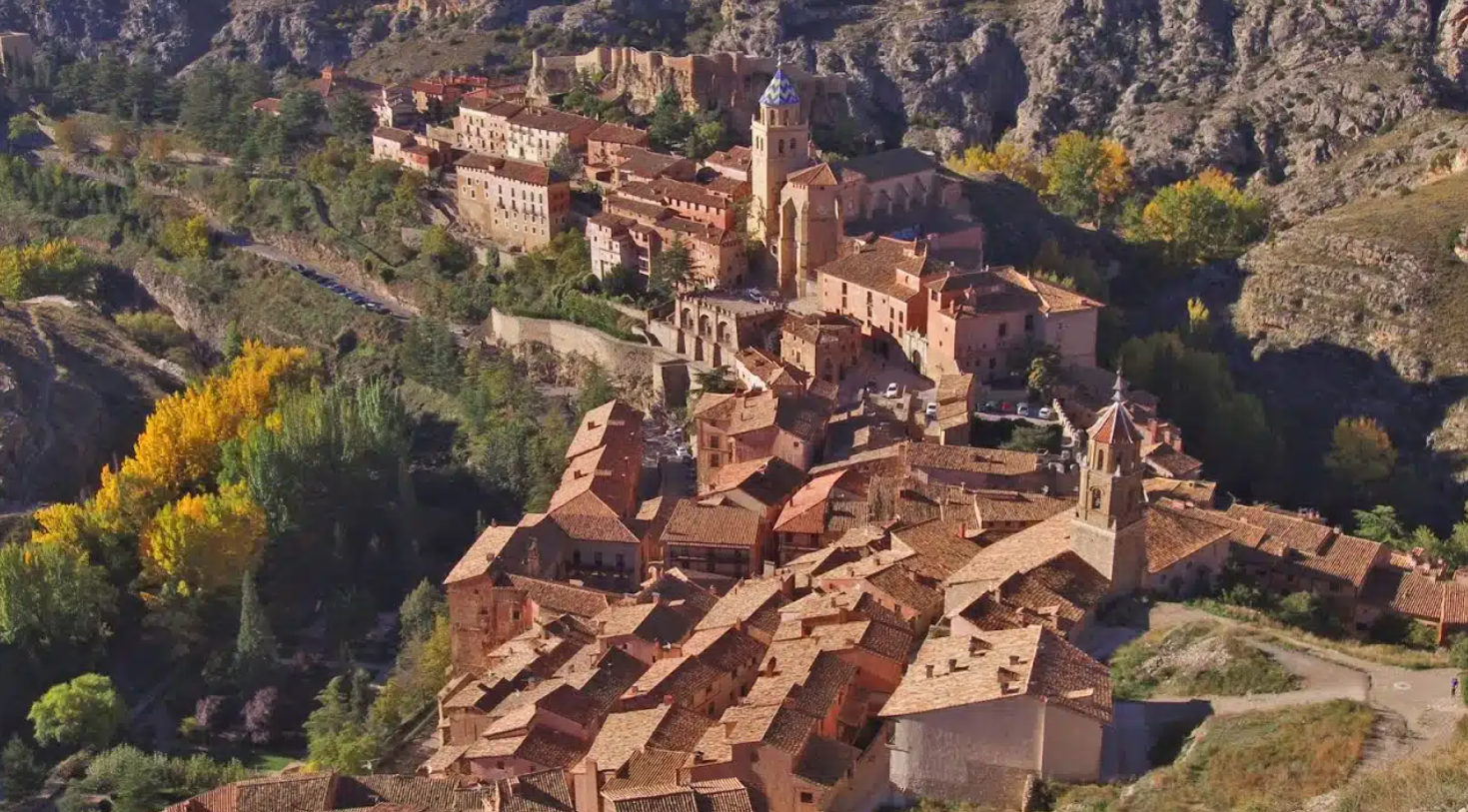
Highlights:
Medieval architecture: The entire town is a living museum of medieval and Renaissance architecture.
Surrounding nature: The town is surrounded by pine forests and rugged landscapes perfect for hiking.
Cultural events: Despite its small size, Albarracín hosts numerous cultural events throughout the year.
Albarracín provides a unique retirement experience, combining history, culture, and natural beauty. The town's small size and relative isolation make it perfect for those seeking peace and tranquillity.
Practical Considerations for Retiring in Spain
While these lesser-known areas offer a more relaxed and authentic Spanish experience, there are some practical considerations to keep in mind:
Language: In many of these areas, English is less widely spoken than in more touristy regions. Learning Spanish will greatly enhance your experience and help you integrate into the local community.
Healthcare: While Spain has excellent healthcare, some rural areas may have fewer medical facilities. It's important to research the healthcare options in your chosen area and consider private health insurance.
Transport: Public transport in rural areas can be limited. Having a car might be necessary, especially if you choose a more remote location.
Community: These areas may have smaller expat communities than more popular retirement destinations. This can be a positive for those seeking an authentic experience but may require more effort to build a social network.
Property: While property prices in these areas are often lower than in more touristy regions, the housing stock may be older and require renovation. It's crucial to do thorough research and possibly rent before buying.
Visa requirements: Non-EU citizens will need to obtain the appropriate visa to retire in Spain. The most common is the Non-Lucrative Visa, which requires proof of sufficient income and private health insurance.
Embracing the Spanish Lifestyle
Retiring in one of Spain's hidden gems offers the opportunity to fully embrace the Spanish lifestyle. This means adapting to local customs and rhythms, which can be a delightful part of the retirement experience.
The Spanish are known for their relaxed attitude towards time, epitomised by the siesta culture. While not as prevalent as it once was, many small towns and villages still observe this midday break. Embracing this slower pace of life can be one of the joys of retiring in Spain.
Food plays a central role in Spanish culture, and each region has its own specialities. From the seafood of Galicia to the hearty stews of Castilla y León, exploring local cuisine can be a wonderful way to immerse yourself in your new home.
Social life in Spain often revolves around the town square or plaza, especially in smaller towns and villages. Sitting at a café, watching the world go by, and chatting with neighbours is a quintessential Spanish experience that embodies the relaxed lifestyle many retirees seek.
Retiring in Spain doesn't have to mean joining the crowds in well-known expat havens. By venturing off the beaten path to areas like the Costa de la Luz, Sierra de Gredos, Maestrazgo, Ribeira Sacra, or Albarracín, retirees can discover a more authentic, relaxed, and enriching Spanish experience.
These hidden gems offer the chance to immerse oneself in Spanish culture, enjoy stunning natural beauty, and embrace a slower pace of life. While they may require a bit more effort in terms of language learning and integration, the rewards of living in these beautiful, tranquil areas can be immeasurable.
Ultimately, retiring in one of Spain's lesser-known regions provides an opportunity not just to live in Spain, but to truly become a part of it. It's a chance to write a new chapter in life, filled with discovery, relaxation, and the simple pleasures of Spanish living. Whether you're drawn to mountain villages, historic towns, or quiet coastal areas, Spain's hidden gems have something to offer every retiree seeking tranquillity and authenticity in their golden years.
 2
Like
Published at 8:00 PM Comments (0)
2
Like
Published at 8:00 PM Comments (0)
The cheapest places to live in Spain close to the beach.
Friday, April 11, 2025
Spain, with its sun-drenched coastlines, vibrant culture, and relaxed lifestyle, has long been a favourite destination for expats and retirees seeking a slice of Mediterranean paradise. However, many assume that living near the beach in Spain has a hefty price tag. Fortunately, that's not always the case. There are still plenty of affordable coastal areas where you can enjoy the Spanish way of life without breaking the bank. In this article, we'll explore some of the cheapest places to live in Spain close to the beach, offering insights into the cost of living, local culture, and what to expect in each location.
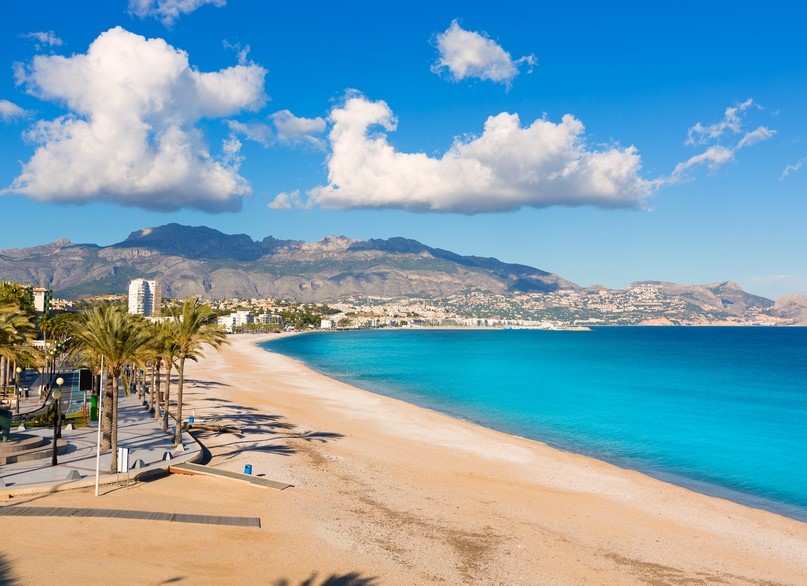
Alicante Province
Nestled along the Costa Blanca, the Alicante Province offers a perfect blend of affordability and coastal charm. While the city of Alicante itself can be pricier, numerous smaller towns and villages in the province provide excellent value for money.
Torrevieja: This coastal city is known for its salt lakes and beautiful beaches. Property prices here are remarkably affordable, with many apartments available under €100,000. The cost of living is generally low, with groceries and dining out being remarkably inexpensive.
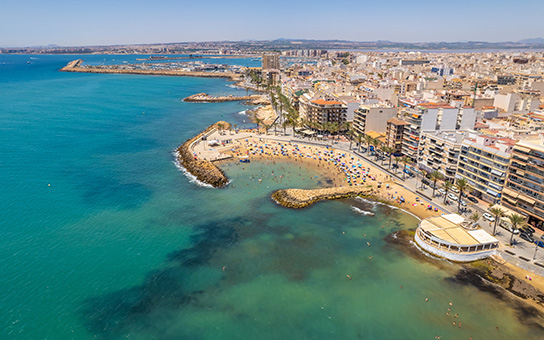
El Campello: Just north of Alicante city, El Campello offers a more laid-back atmosphere with its long stretches of sandy beaches. While slightly more expensive than Torrevieja, it's still considerably cheaper than many other coastal areas in Spain.
Living in the Alicante Province allows you to enjoy a typical Mediterranean climate with hot summers and mild winters. The area is well-connected, with Alicante-Elche Airport providing easy access to the rest of Europe.
Murcia Region
The Murcia region, often overlooked by international buyers, offers some of the best value coastal living in Spain. With its unspoiled beaches and authentic Spanish atmosphere, it's a hidden gem for those seeking affordability near the sea.
Águilas: This charming fishing town boasts beautiful beaches and a rich history. Property prices here are very competitive, and the cost of living is notably low. The town has a strong Spanish feel, perfect for those looking to immerse themselves in the local culture.
Mazarrón: Another coastal gem in Murcia, Mazarrón offers a combination of beautiful beaches and affordable living. The area is known for its excellent climate, with over 300 days of sunshine annually.
The Murcia region benefits from a dry, warm climate and is less developed than some of the more popular coastal areas. It offers a more authentic Spanish experience. The new Murcia International Airport has improved accessibility to the region, making it an increasingly attractive option for international residents.
Costa del Sol (Málaga Province)
While parts of the Costa del Sol are known for luxury and high prices, there are still pockets of affordability to be found, especially if you're willing to look beyond the most famous resorts.
Torrox: Often called the 'healthiest place to live in Europe' due to its microclimate, Torrox offers a blend of beach life and traditional Andalusian charm. Property prices here are much lower than in nearby tourist hotspots like Nerja.
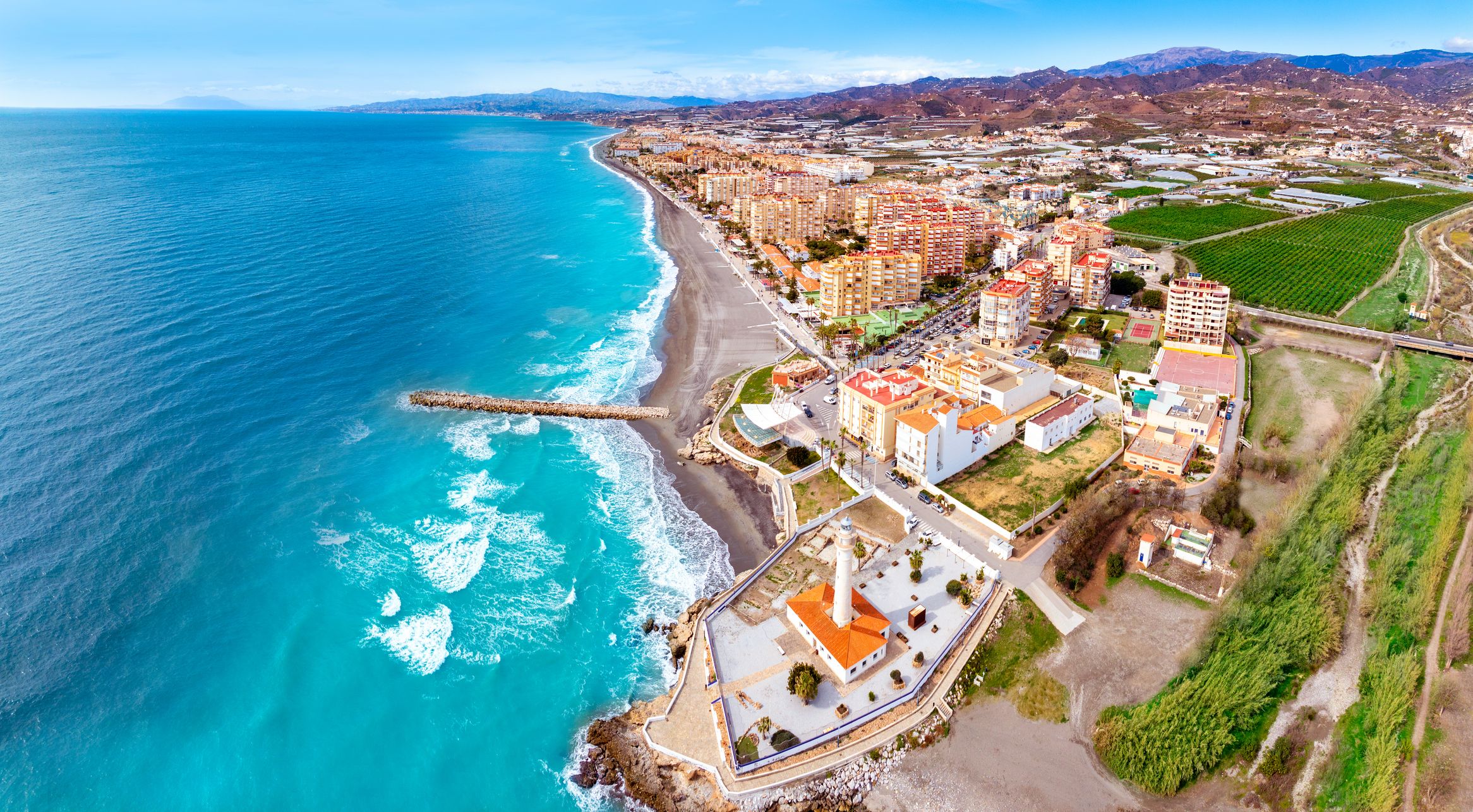
Vélez-Málaga: The capital of the Axarquía region, Vélez-Málaga, is located just inland but close to the beaches of Torre del Mar. It offers a more authentic Spanish lifestyle with lower living costs than the more touristy coastal areas.
Living on the Costa del Sol provides excellent amenities, a large expat community, and easy access to Málaga city and its international airport. The region enjoys a subtropical Mediterranean climate with mild winters and hot summers.
Costa de Almería
The Costa de Almería in southeastern Spain offers some of the most affordable coastal living in the country. This region is less developed and touristy than other coastal areas, providing a more authentic Spanish experience.
Mojácar: This picturesque white village perched on a hill near the coast offers stunning views and beautiful beaches. Property prices in Mojácar are very reasonable, and the cost of living is low compared to more popular coastal destinations.
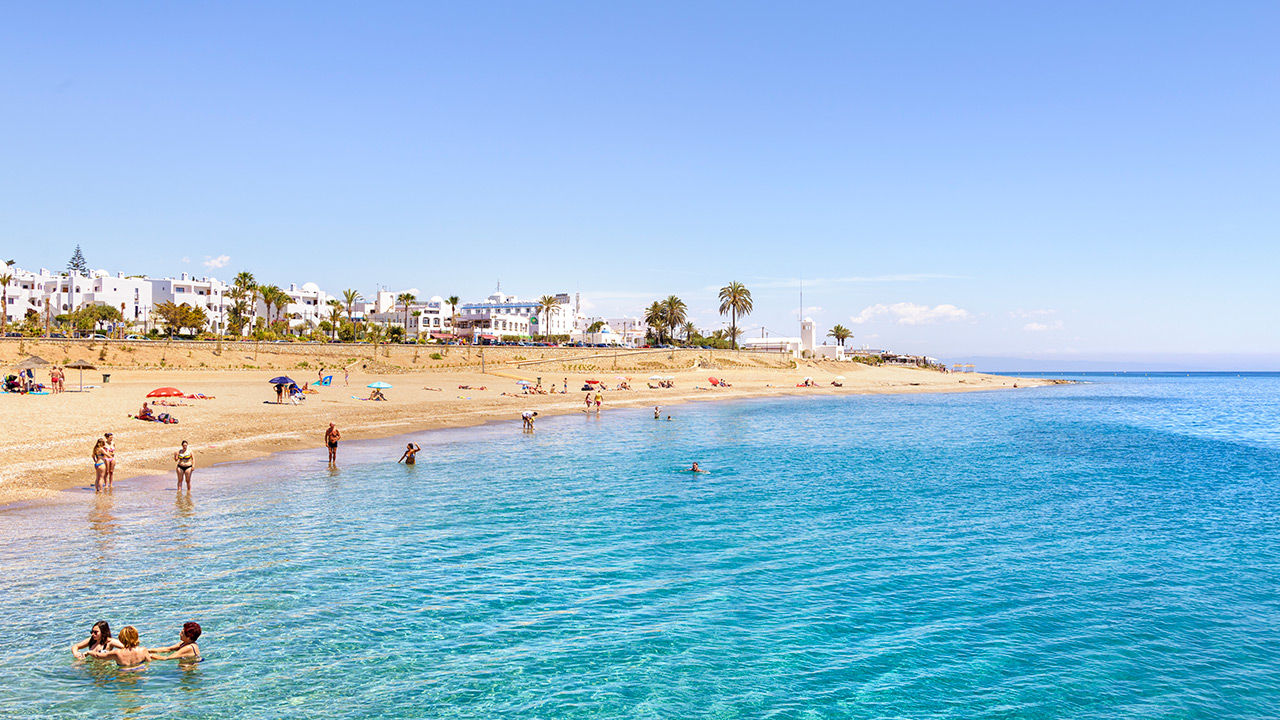
Garrucha: This small fishing town provides an authentic Spanish coastal experience at affordable prices. It's known for its seafood and beautiful beaches.
The Costa de Almería boasts a dry, sunny climate and is home to Europe's only desert, the Tabernas Desert. The region offers a slower pace of life and is ideal for those seeking tranquillity and affordability.
Costa de la Luz (Huelva Province)
Located in southwestern Spain, bordering Portugal, the Costa de la Luz in Huelva Province offers some of the country's most pristine beaches at very reasonable prices.
Isla Cristina: This coastal town is known for its beautiful beaches and is one of the most important fishing ports in Andalusia. Property prices here are very competitive, and the cost of living is low.
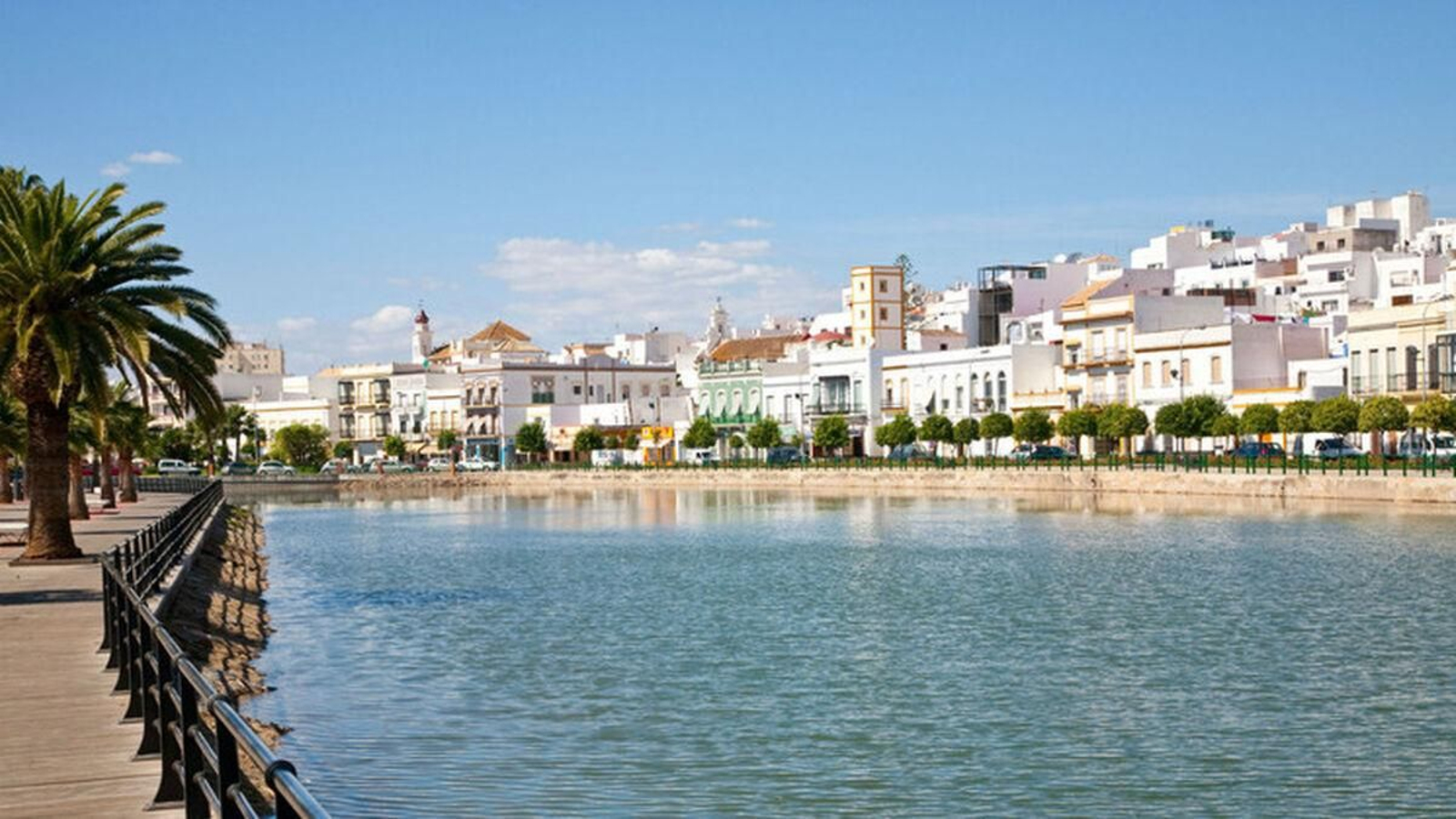
Ayamonte: Situated on the border with Portugal, Ayamonte offers the best of both countries. It's a charming town with affordable property prices and a low cost of living.
The Costa de la Luz enjoys a warm climate with Atlantic breezes, making it cooler in summer than some Mediterranean coast areas. The region is less developed touristically, offering a more authentic Spanish experience.
Considerations When Choosing a Location
While these areas offer affordable coastal living, it's essential to consider several factors when deciding where to settle:
Year-round living vs. holiday destinations: Some cheaper coastal areas may be quiet during the off-season. Consider whether you're looking for a bustling year-round community or are happy with a more seasonal atmosphere.
Healthcare: While Spain has excellent public healthcare, some smaller towns may have limited medical facilities. Ensure you research the healthcare options in your chosen area, especially if you have specific medical needs.
Transport links: Consider how well-connected the area is. Are there good public transport options? How far is the nearest airport? This can be particularly important if you plan to travel frequently or expect visitors from abroad.
Language: In some less touristy areas, English may not be widely spoken. If you're moving to a more authentic Spanish area, consider your Spanish language skills and willingness to learn.
Work opportunities: If you need to work, research the job market in your chosen area. Some smaller coastal towns may have limited employment options, especially for non-Spanish speakers.
Community: If having fellow international residents nearby is important to you, look into the existing expat community in the area. Some areas have large, established expat communities, while others are predominantly Spanish.
Cost of Living in Coastal Spain
While these areas offer more affordable living compared to popular tourist destinations or major cities, it's important to have a realistic understanding of the costs involved in living in coastal Spain.
Accommodation: Rental prices can vary significantly depending on the specific location and type of property. In many of the areas mentioned, one-bedroom apartments are available for rent from around €400-€600 per month, with purchase prices for similar properties starting from around €70,000-€100,000.
Utilities: Monthly utilities (electricity, heating, cooling, water, garbage) for a small apartment typically range from €80-€120.
Food and Dining: Grocery prices in Spain are generally reasonable, especially if you shop at local markets and buy seasonal produce. A meal at an inexpensive restaurant might cost around €10-€15 per person.
Transportation: Public transport is generally affordable in Spain. A monthly pass for local transport typically costs between €30 and €50.
Healthcare: If you're a resident contributing to the Spanish social security system, you'll have access to public healthcare. Private health insurance is also available and relatively affordable, with basic plans starting from around €50-€100 per month.
Remember that while these areas offer more affordable living, costs can still add up. It's crucial to budget carefully and consider all expenses, including potential property taxes, income taxes, and healthcare costs.
Spain's coastline offers a diverse range of affordable living options for those dreaming of a life by the sea. From the Costa Blanca to the Costa de la Luz, there are numerous locations where you can enjoy beautiful beaches, warm weather, and the famous Spanish lifestyle without spending a fortune.
However, it's essential to do thorough research before making a move. Visit your potential new home at different times of the year, speak to locals and expats already living there, and carefully consider your personal needs and preferences.
Whether you're looking for a bustling town with a large expat community or a quiet fishing village where you can immerse yourself in Spanish culture, there's likely an affordable coastal area in Spain that's perfect for you. With careful planning and consideration, your dream of affordable beach living in Spain can become a reality.
 1
Like
Published at 11:10 PM Comments (0)
1
Like
Published at 11:10 PM Comments (0)
Spam post or Abuse? Please let us know
|
|